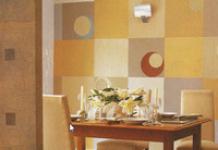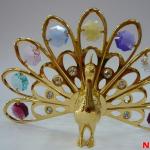Wall decoration with decorative stone helps to create an entourage of naturalness and complete individuality. This material can be applied to works in and outside of rooms. The most commonly used artificial variety of the product, which has many subspecies. This option is more economical, from a financial point of view. Modern technologies allow the production of products that almost completely mimic the properties natural materials.
Decorative rock It is customary to divide into two main categories: natural and artificial. Naturally, many consider the first option to be the most preferable, but this is not always the right decision.
natural material
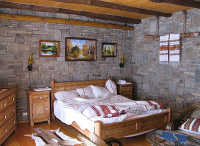
Such material has been used for many centuries, so its durability is beyond doubt. It is completely resistant to mechanical stress, tolerates direct sunlight well. In more detail, this type has practically no drawbacks. Although it is the natural origin of the stone that causes some negative aspects of working with it:
- High cost. The price of such products can reach fantastic rates, which significantly limits its use.
- Difficulties in processing. The process of creating elements that will be suitable for cladding a surface is incredibly difficult and costly.
- Heterogeneity of textures and shades. Creating a uniform coating is not an easy task.
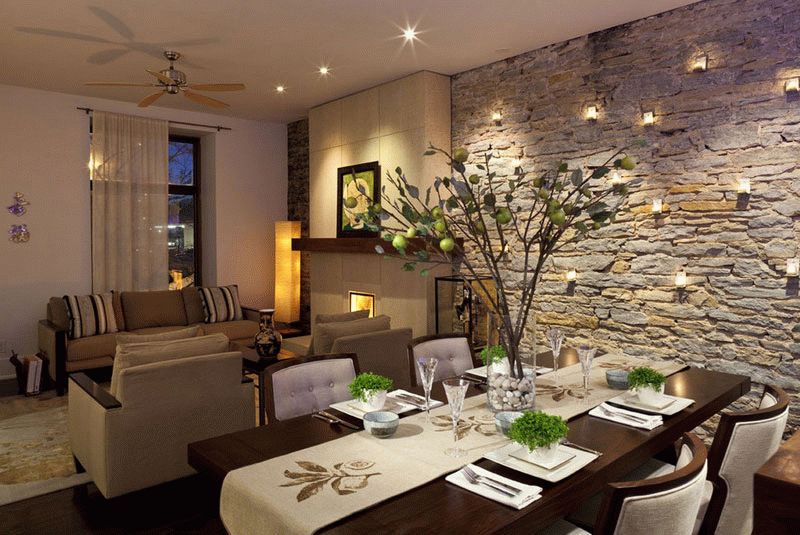 The process of laying natural stone is quite laborious and requires drawing up a diagram.
The process of laying natural stone is quite laborious and requires drawing up a diagram. For laying this product, it is necessary to draw up a preliminary scheme that will help combine fragments with each other.
Fake diamond
This option perfectly imitates natural stone. Due to this, it has become so widespread. There are many varieties that differ in the components that make up the product.
On a note! Wall decoration with artificial stone, regardless of the material of production, is carried out according to a single technology.
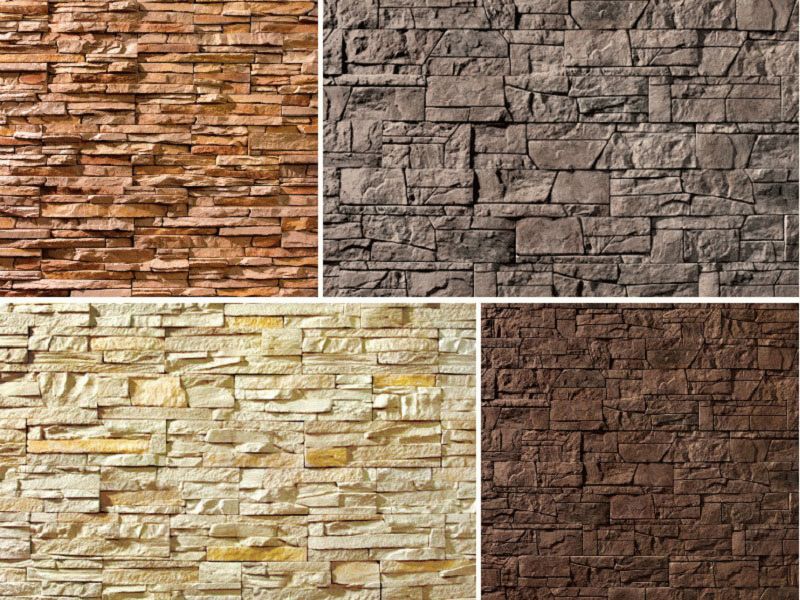 Variety of artificial decorative stone
Variety of artificial decorative stone Cement-based products
The basis is Portland cement, to which various additives are mixed. This option is great for cladding the facade of the house with artificial stone, but can also be used indoors. This type has the following characteristics:
- Excellent durability.
- Moisture resistance.
- Durability.
- Maintainability.
The main disadvantage is the large weight, which creates a significant load on the surface. Therefore, you need to carefully approach the choice of glue.
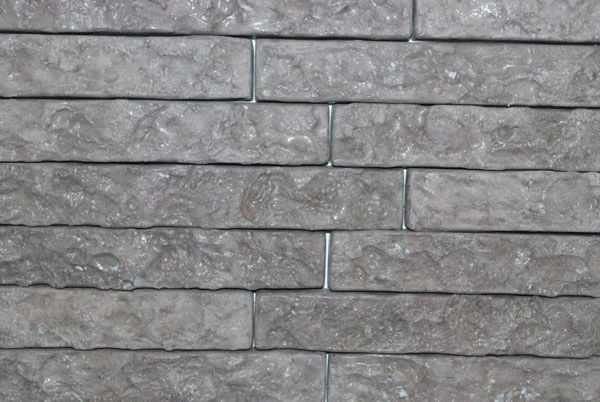 Decorative stone based on cement
Decorative stone based on cement Gypsum variant
It is one of the most popular materials. Great for decorating surfaces in the living room and bedroom. This is confirmed by the main advantages:
- Environmental friendliness.
- Additional sound and heat insulation of the room.
- Affordable price.
- A light weight.
- A wide selection of textures and shades.
Such fake diamond has one big drawback - instability to mechanical damage.
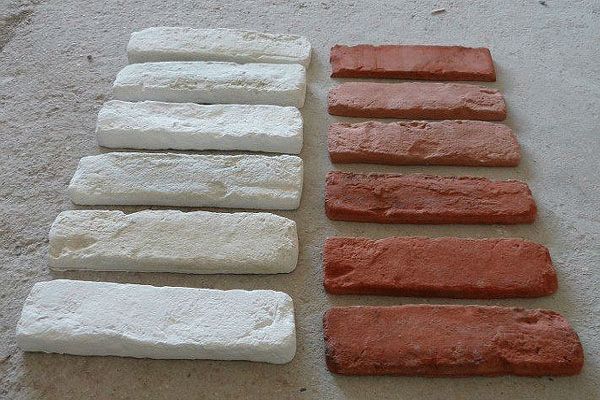 Gypsum decorative material
Gypsum decorative material acrylic material
When using this option, you get an excellent stone-like finish, which is distinguished by color saturation. The material has all the advantages that are present in related species, but has a higher price. Although its protective characteristics are far superior to gypsum.
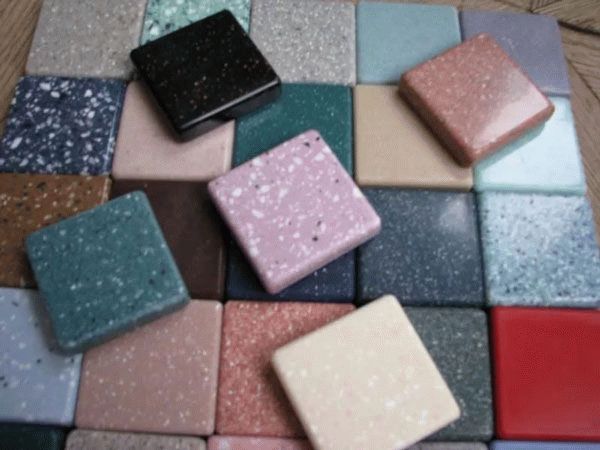 Acrylic decorative stone
Acrylic decorative stone
This is a modern decorative stone that is flexible. Literally speaking, the material is sheets on the surface of which sandstone is applied. There are options with a thin cut of natural material.
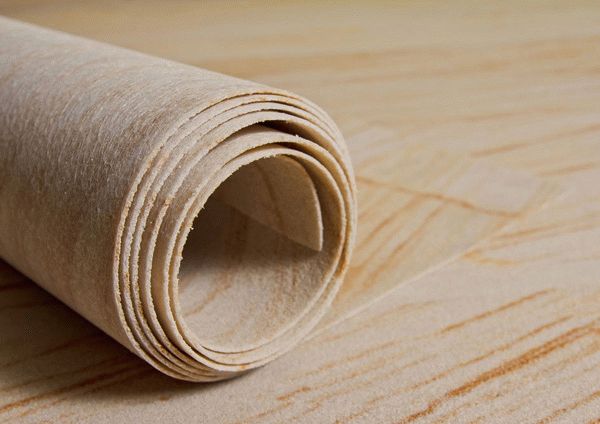
On a note! In fact, there are many more varieties, such as: agglomerates, quartzite and porcelain stoneware.
Photo gallery: the use of decorative stone in the interior
Interior surface finish
Interior decoration walls is a process that requires maximum concentration. Facing with decorative stone is the final stage, which is preceded by various preparatory activities. Compliance with all the rules and nuances is the key to a reliable and beautiful coating.
Stage one: preparatory work
All work begins with a preliminary calculation required amount the main and auxiliary material, the preparation of tools. It is necessary to take into account some rules:
- The calculation of the required amount is made taking into account the surface area. From this indicator, door and window openings, locations of other finishing materials are subtracted.
- To get a more detailed picture, a plan and layout of the room is drawn up. It should be borne in mind that artificial stone often has the wrong dimensions, so it is accounted for in linear meters.
- Working with a stone with your own hands, even with proper experience, sometimes leads to damage to the fragments. Therefore, another 10% is added to the required amount.
Special attention is paid to the tool:
- Bulgarian. The circle is purchased separately, based on which decorative stone is selected.
- Spatula set including notched.
- Level - up to half a meter.
- Priming kit.
- Capacity.
On a note! For cladding with artificial stone are used different kinds glue. The most preferred are: "liquid nails" or mixtures based on cement and gypsum.
 Tools needed for laying decorative stone
Tools needed for laying decorative stone Stage two: sequence of three steps
It does not matter where the stone walls will be finished, in the hallway or living room. The main thing is to thoroughly approach the preparation of the surface. This process includes three main steps:
- Step one: dismantling the old coating
This process must be carried out very carefully. It is necessary to follow the main rule, which is that it is better to do everything anew than later - to redo everything completely.
Therefore, a layer of paper wallpaper, paint or tiles is completely removed. Next, you need to evaluate the reliability of the plaster. To do this, tap the wall. Any empty sound indicates that there are voids. This layer is dismantled.
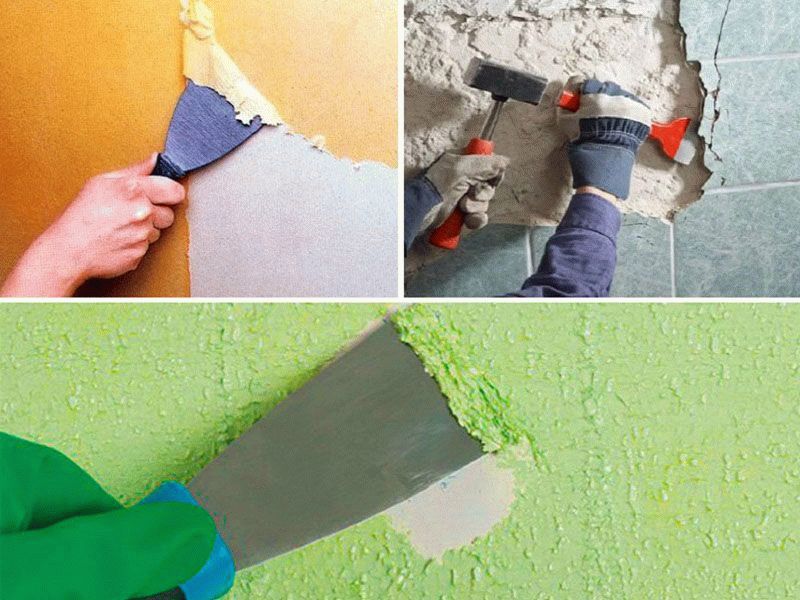 Facing with decorative stone requires complete dismantling of the old coating
Facing with decorative stone requires complete dismantling of the old coating On a note! It is important to consider that if an artificial stone occupies more than 50% of the surface, then the coating must be removed to the base.
- Step two: alignment
Even in an apartment that is located in a new house, such a procedure is carried out. You need to get a flat surface. This will greatly facilitate the work on finishing the walls inside the premises. Although many manufacturers indicate that their decorative stone is laid on surfaces that may have defects. It is better to ignore such recommendations.
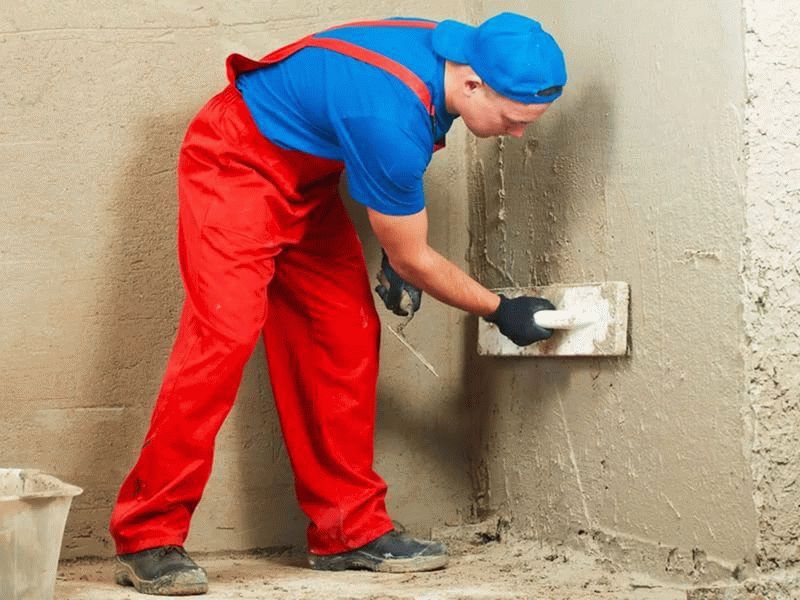 Leveling walls with plaster
Leveling walls with plaster The process consists in the fact that all cracks are covered with putty. And if there is a difference of more than 4-5 mm, then a layer of plaster is applied.
- Step three: primer
This is a mandatory process that is necessary for better adhesion of materials. For work, an acrylic primer with a high penetrating effect is used. It is applied in two layers.
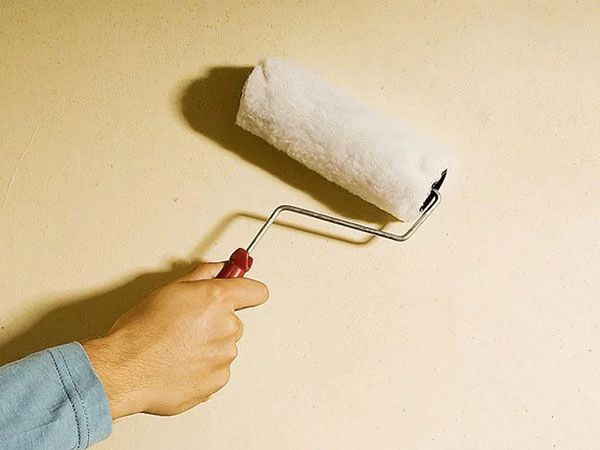 Final stage preparatory work- surface priming
Final stage preparatory work- surface priming Stage three: surface cladding
When all the previous stages are completely finished, artificial stone decoration begins, a kitchen or another room. If a material is used that has a different size and uneven edges, then it is first laid out on a flat area to form the desired option.
It all starts with the preparation of the solution (if dry glue is used). This is done simply: pour into a container right amount water and dry mix. Using a drill with a mixer attachment, everything mixes well. The main thing is to exclude the appearance of lumps and the presence of dry residue at the bottom. Further, a clear procedure is followed.
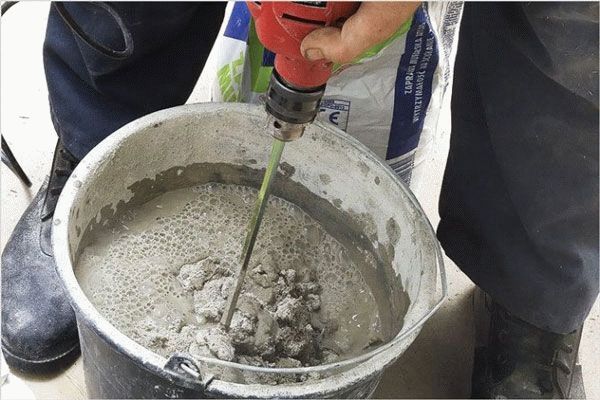 Mixing dry glue with water, you need to achieve uniformity of the solution
Mixing dry glue with water, you need to achieve uniformity of the solution
Work begins from any of the corners of the room. Laying can be started from the top or bottom. The first option is preferable. The fact is that if you start finishing from below, then the coating, which is already lined with material, will get very dirty. Therefore, you have to work more carefully.
The process looks like this:
- The wall is marked. For this, lines are drawn. Their step is 10-15 cm.
- The first element is taken, on which a layer of adhesive mixture is applied. Its thickness should not exceed five millimeters.
- If required, a small layer is applied to the treated area.
- The fragment is applied to the surface and slightly shifted. After such manipulation, the product should clearly take its place.
- A little pressure on facing material, you can achieve the release of excess glue. They are immediately removed with a spatula.
- When finishing with a decorative stone is performed using fragments of different sizes, then the second element is laid, which differs in size from the previous one.
- If necessary, seams are formed. If the material is laid closely, then the joints should not match.
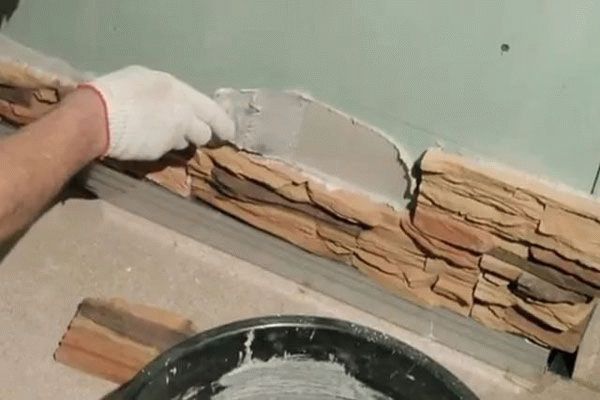 Laying decorative stone starts from the corner of the room
Laying decorative stone starts from the corner of the room On a note! The seams look great in the interior of the living room or kitchen, if made in the overall size.
Creating Corners
To form a beautiful corner, special corner elements are purchased.
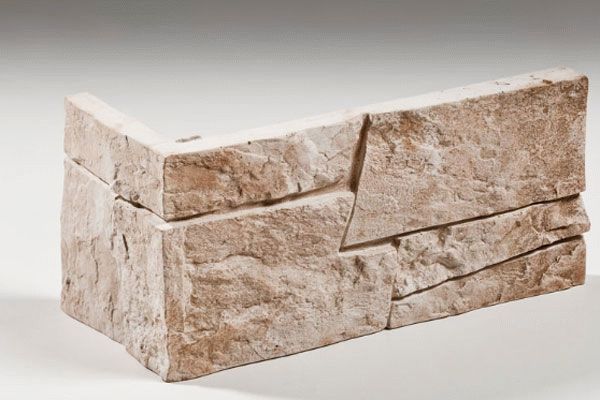 Corner element to form beautiful corners
Corner element to form beautiful corners This can be avoided if desired. There are several options that depend on the specific material:
- If products with clear dimensions are used, then they are laid from the outer corner. Then the inner corner is formed by straight trimming.
- Facing of uneven fragments is performed in the reverse order. The outer corner is made by overlapping. The protruding parts are cut off or sawn off with a file. The opened section is tinted.
- Cutting at 45 degrees is considered an excellent solution. Such a joint turns out to be very neat.
The edges of the coating are formed according to a similar principle. The main thing is to make a neat cut, which is well polished with sandpaper.
Finishing
Finishing consists of several steps:
- The seams are finally formed with a grout mixture. They are left until the solution is completely dry. It should be borne in mind that the joints are not completely filled so that the decorative stone protrudes above the surface.
- Seams are painted. Paint is chosen in similar or contrasting shades.
- If necessary, the coating is covered with a layer of varnish or protective impregnation.
- To give a greater entourage, exhibited lighting, which favorably emphasize the volume of textures. An excellent effect can be achieved in the living room if you mount the lamps in the floor or ceiling.
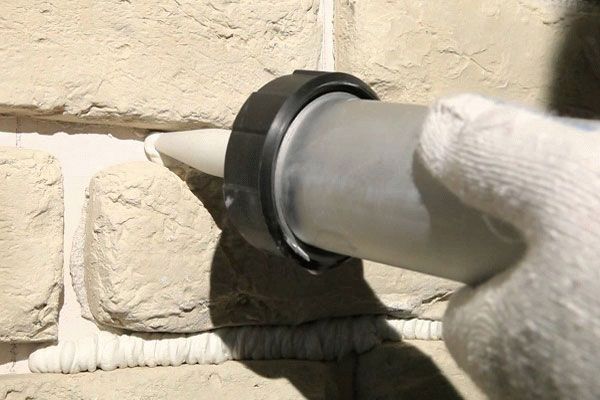 The formation of beautiful seams allows you to give the surface a finished look.
The formation of beautiful seams allows you to give the surface a finished look. In principle, decorating walls with natural or artificial stone indoors is a simple procedure that everyone can do.
A little bit about decorating the exterior of buildings with decorative stone
This procedure almost completely repeats the work inside the house. But it differs in more thorough preparation of the base. Especially if you are finishing a wooden wall with a stone. In this case, it is necessary to carry out reinforcement and puttying.
To create a sense of sophistication, you can use decorative stone in the interior.
With a variety of textures, shapes and colors, it makes it possible to use it in the design of different rooms, for example, in the hallway, kitchen, bathroom or living room.
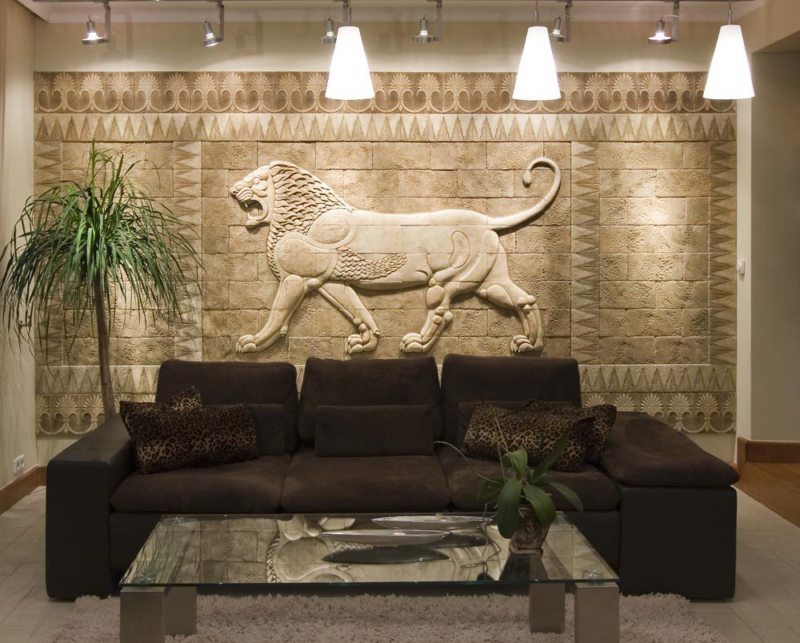
Even in ancient times, stone was used not only in construction, but also in interior decoration.
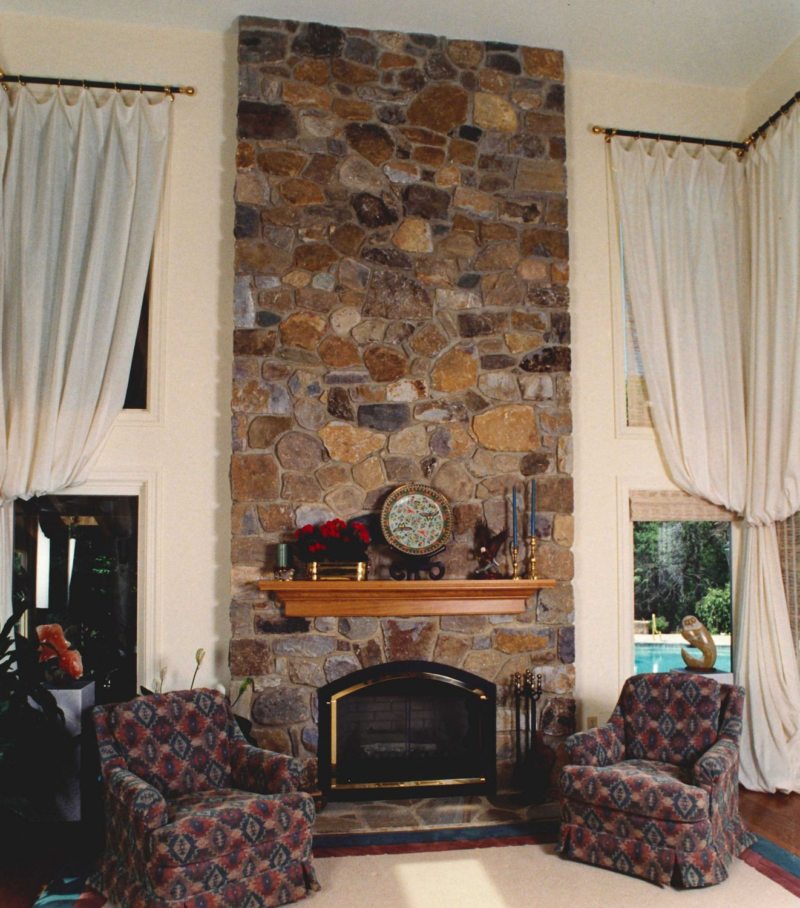
Now natural stone is an expensive, heavy material, which has been successfully replaced by artificial one. To decorate the walls with decorative stone, you should choose only high-quality material.
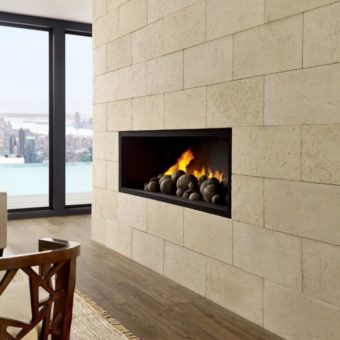
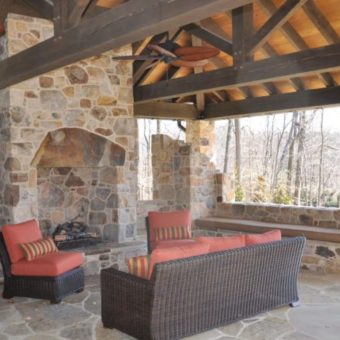
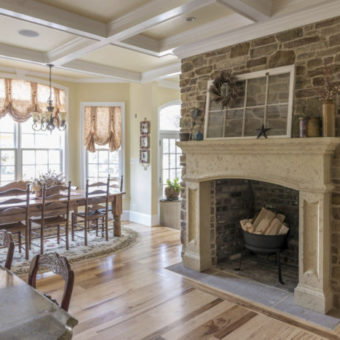
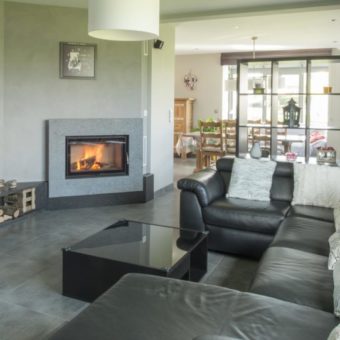
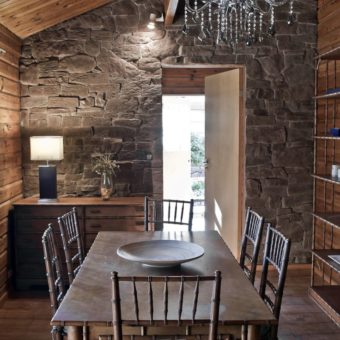
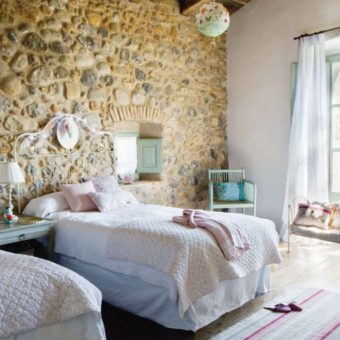
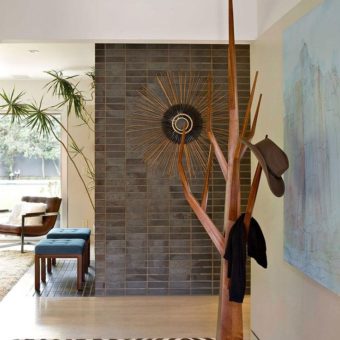
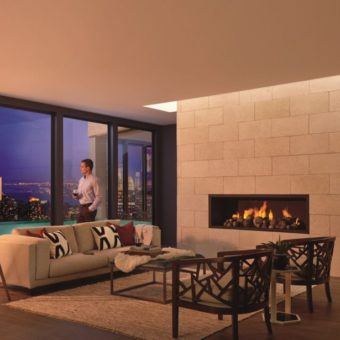
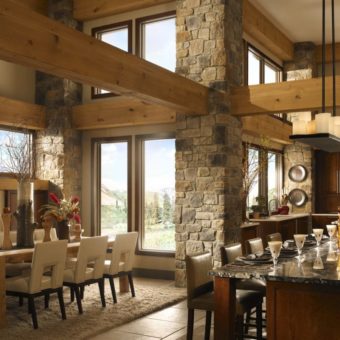
On the advantages of decorative stone
- Rich appearance;
- environmentally friendly material;
- not afraid of corrosion, fungus and mold;
- easy to care for; easy to install;
- has different shades; durable, heat-resistant and frost-resistant;
- is inexpensive.
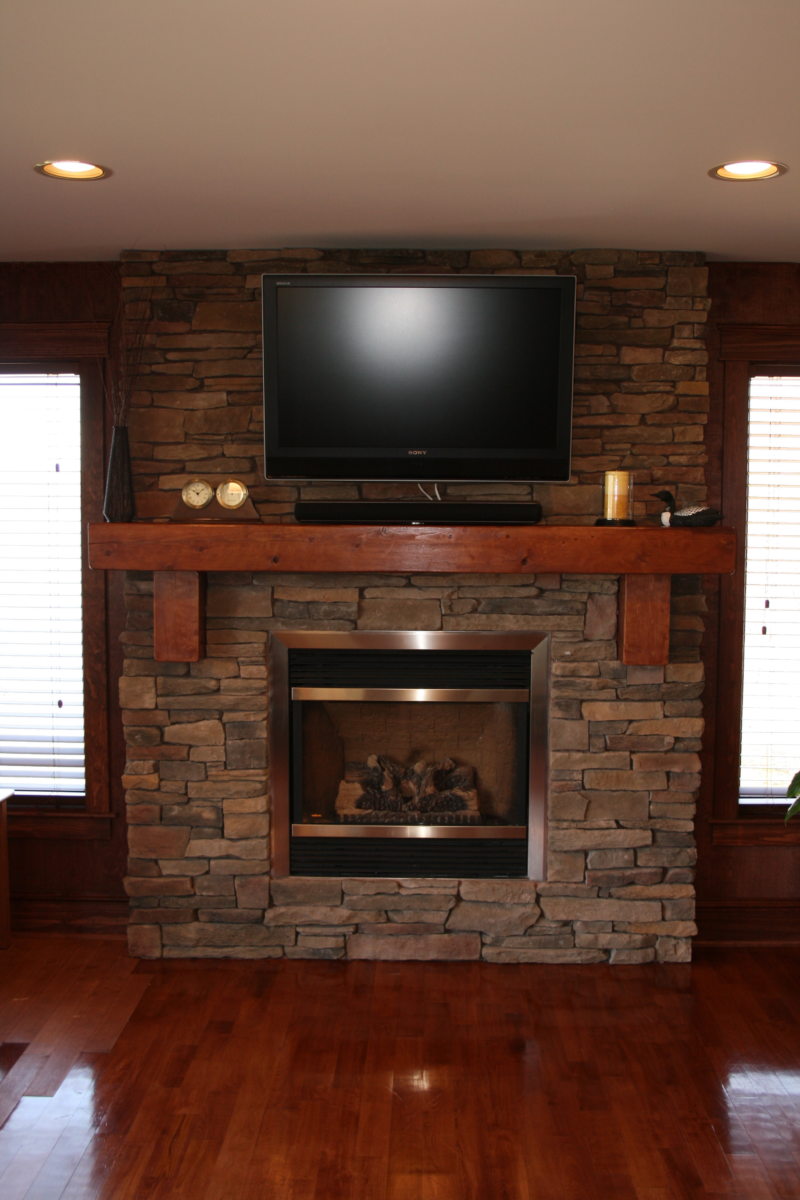
Currently, decorative stone in the interior of an apartment can be used in almost all areas of modern housing.
![]()
To make sure that the stone looks good in a modern interior, you can see a photo of a decorative stone in the interior of completely different rooms.
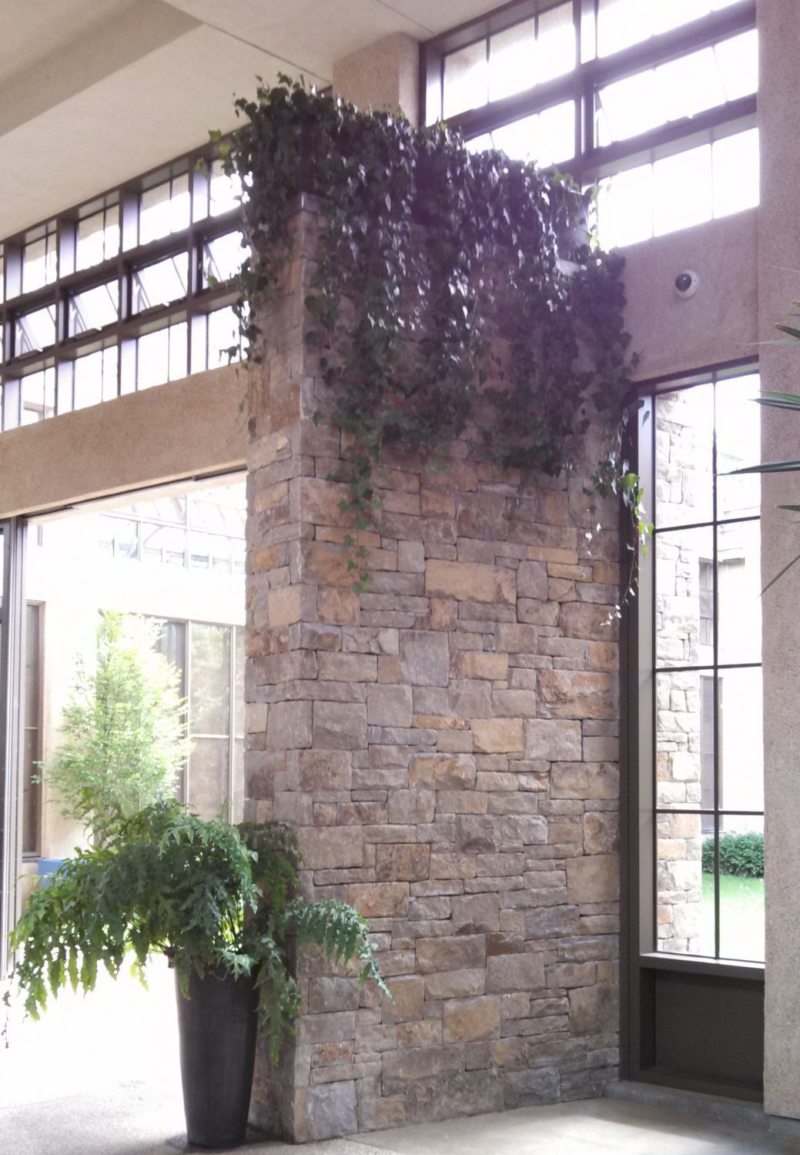
hallway stone
No one will argue that the first impression of your home guests get when they enter the hallway. An artificial stone will tell about the sophistication of the owners right from the doorstep.
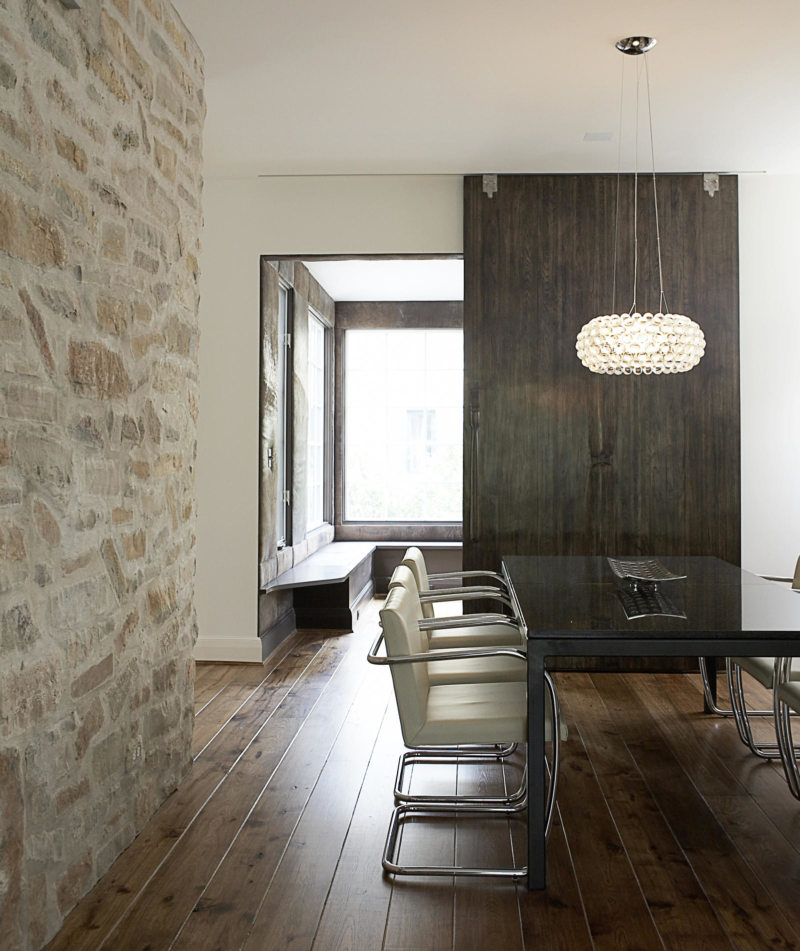
If you are going to use a decorative stone in the hallway, you should remember about its small size and inaccessibility to natural light.
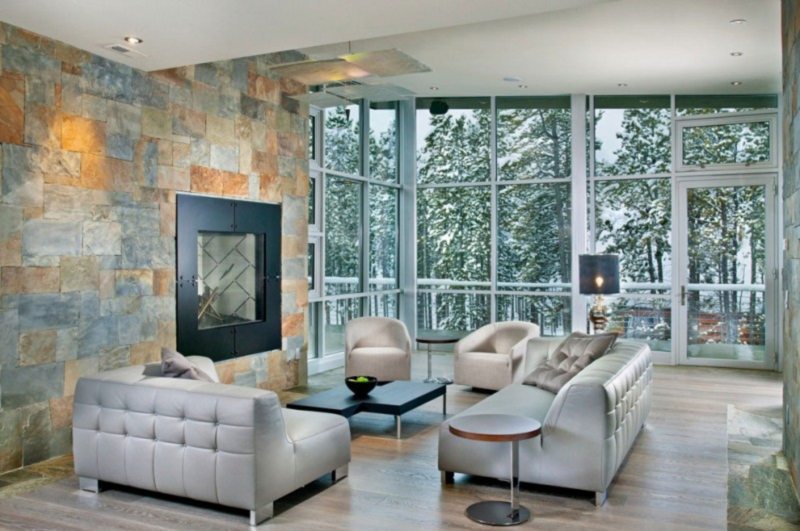
Therefore, it is necessary to choose light colors here. If you settled on dark shades, add additional lighting to the hallway.
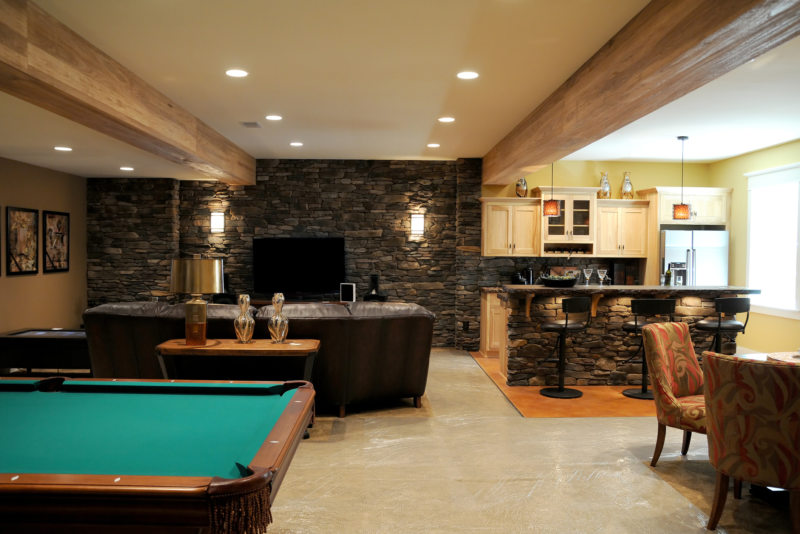
And, besides, the best option is a partial finish. The stone can be used to decorate mirrors, arches, walls behind a hanger. Remember that the room will become sophisticated if you avoid oversaturation.
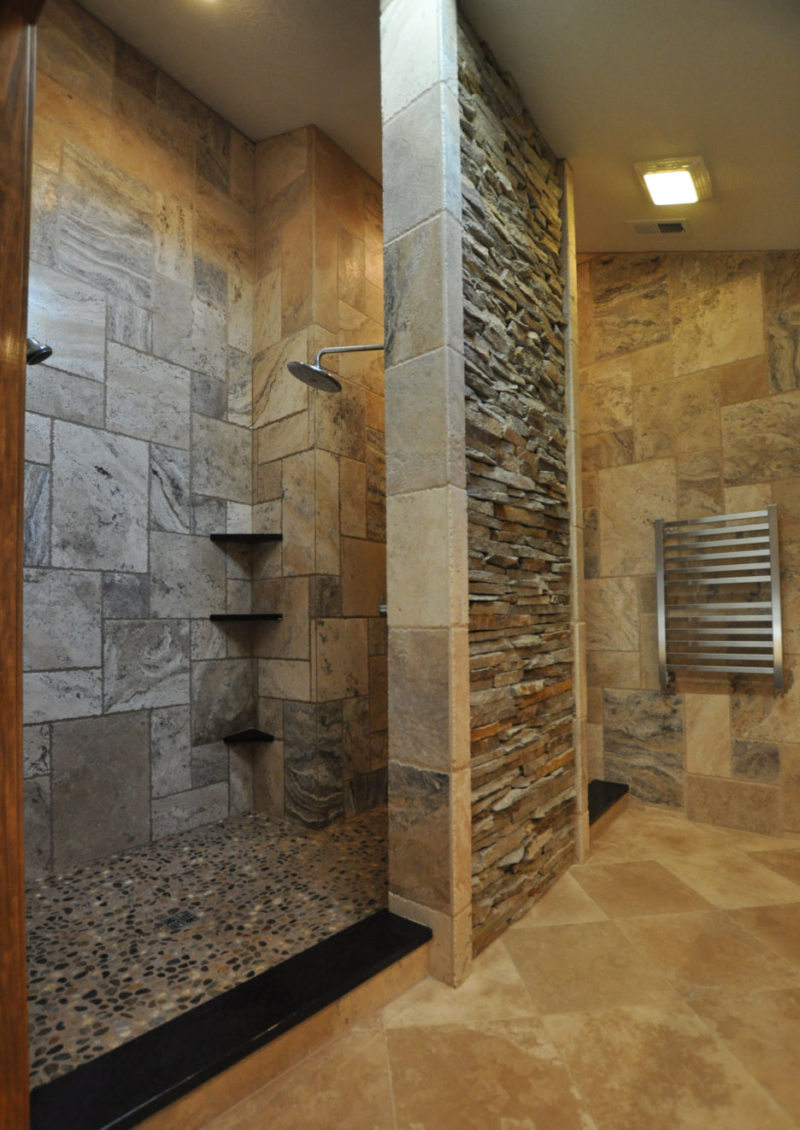
Living room stone
Here they receive guests or arrange cozy home gatherings. Usually the living room is the largest room in terms of area. Therefore, the stone can be used to highlight zones.
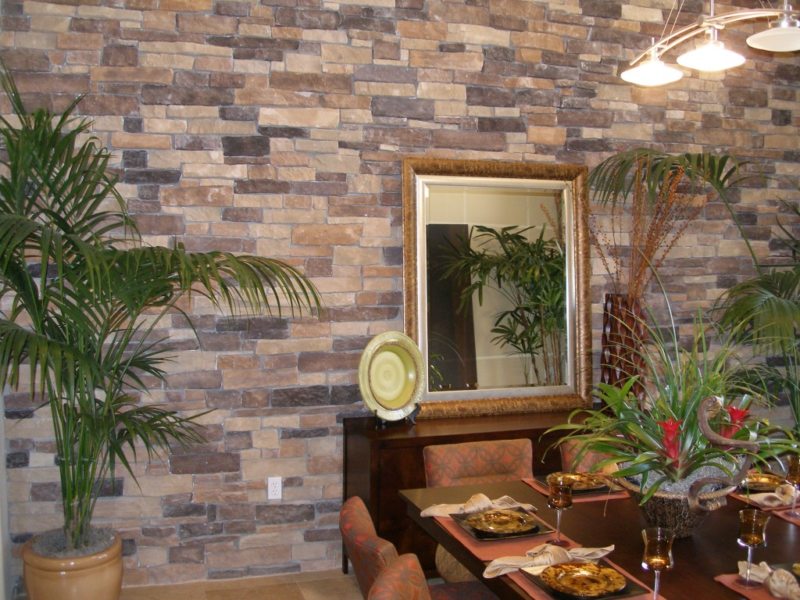
The stone is used to decorate the wall near the table, the shelving area, and its heat resistance allows them to finish the fireplace and the area in front of it.
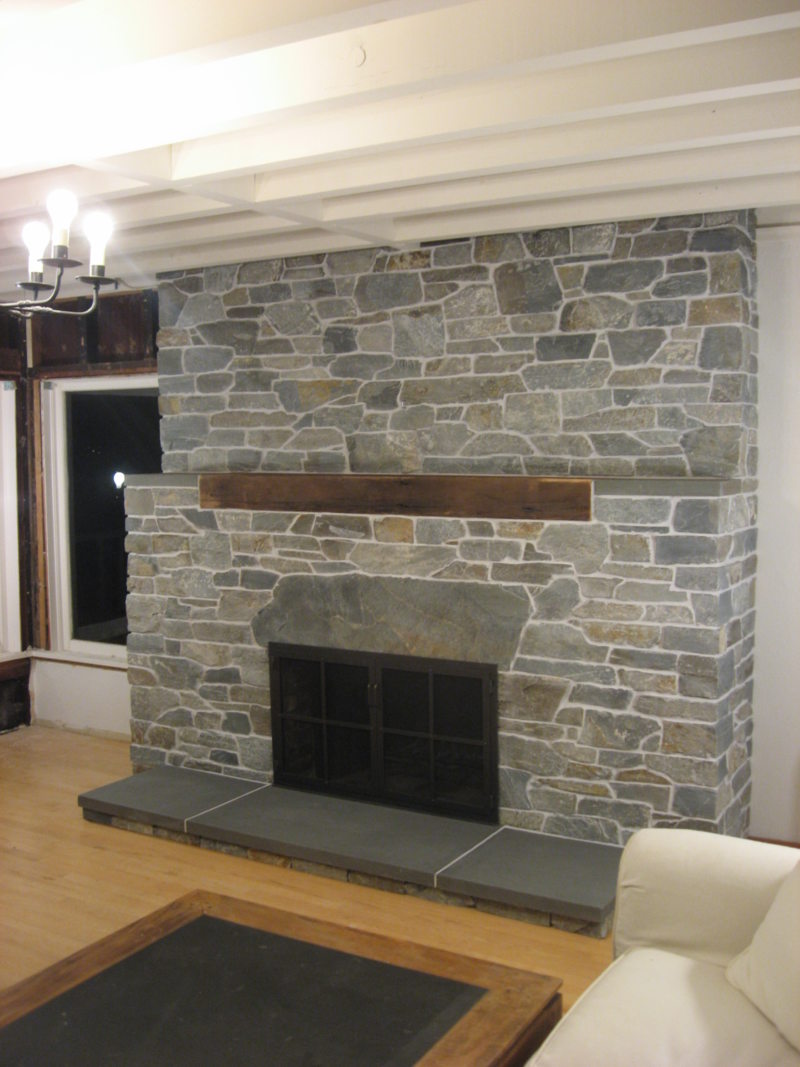
The bar counter and walls in the TV area can also be decorated with artificial stone. A variety of colors makes it possible to create smooth transitions colors, or make contrasting accents, giving uniqueness to the room.
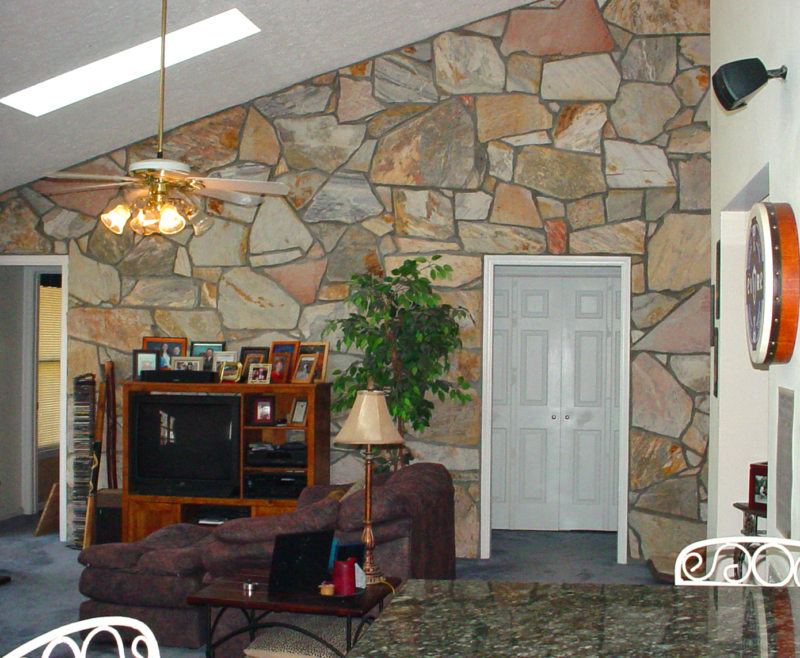
stone in the kitchen
Using a decorative stone, you can transform the room beyond recognition. This material is quite practical, it is easy to clean, it is not afraid of temperature changes and is quite moisture resistant.
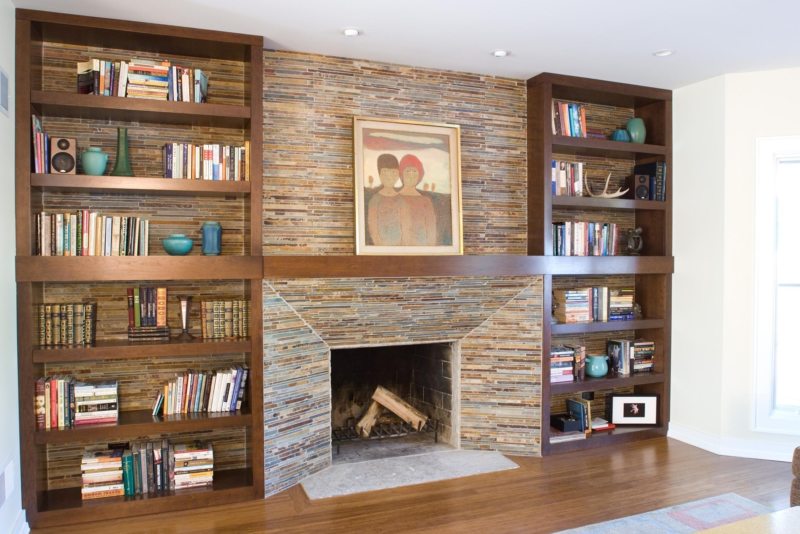
With it, you can make a work area, or all the walls, giving the kitchen the look of a medieval room.
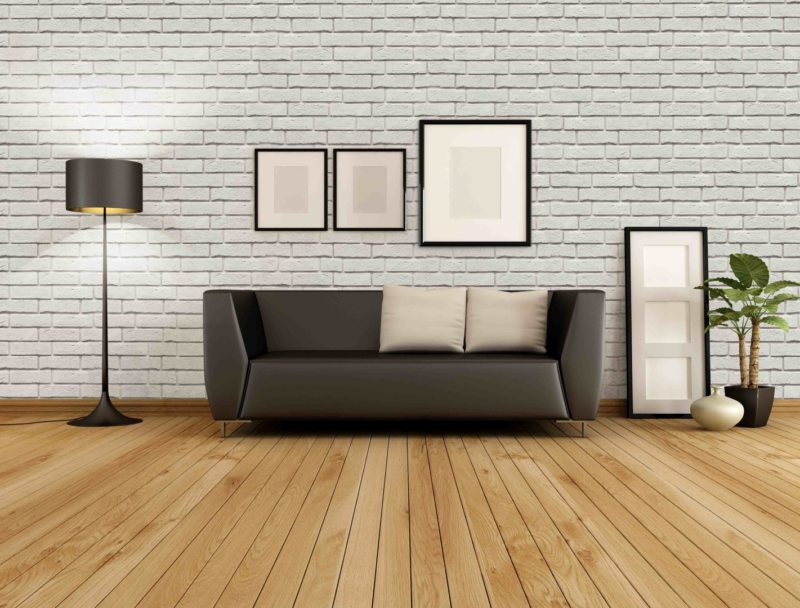
Stone trim doorways, niches, part of the wall, dining area. But it is worth remembering that the stone must be combined with the set, and match the size of the room, if the kitchen is small, take a small stone, spacious - large.
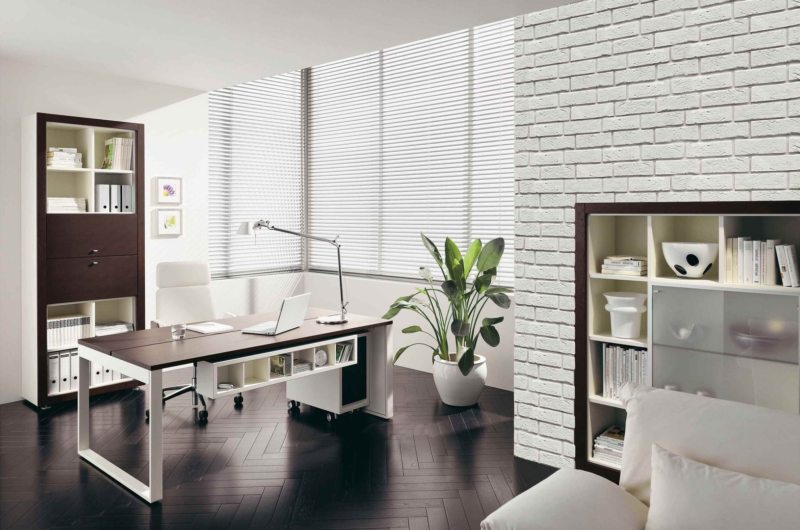
Stone in the bedroom
Warm colors are suitable for this room. The best option would be a white decorative stone in the interior. They can trim the headboard area. Stone panels will look good here.
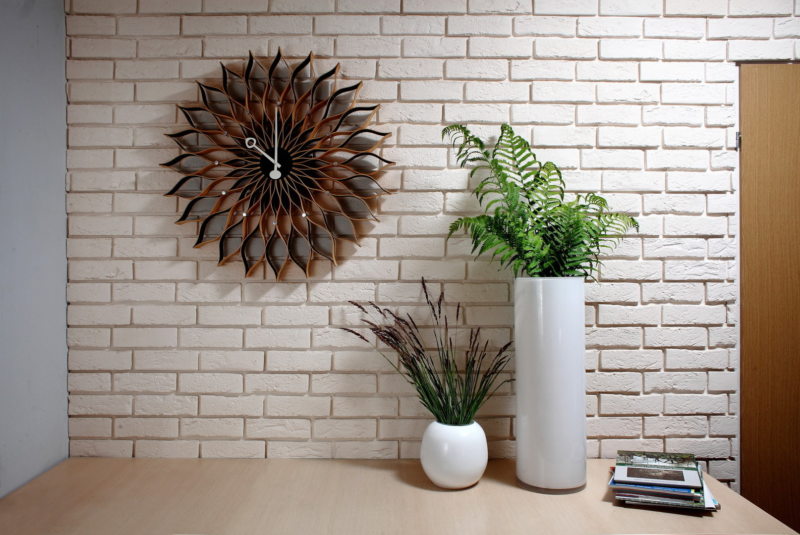
And of course, the stone goes well with natural wood. If a stone of dark tones is chosen, then it is better to combine it with light furniture.
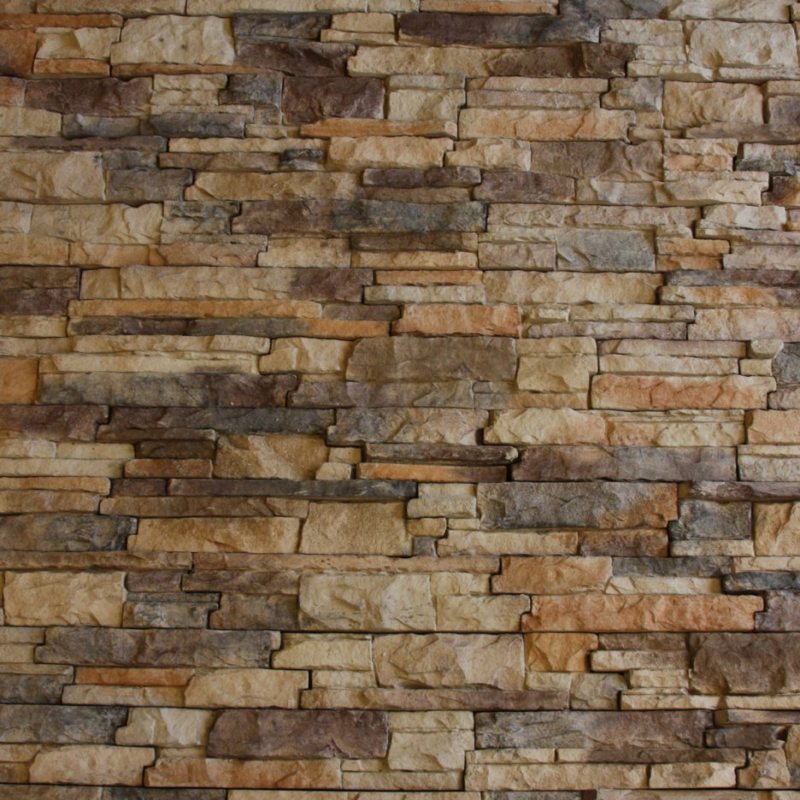
bathroom stone
This room requires high-quality finishing material. If you use artificially made marble or granite, which have water-repellent properties, then the bathroom can be turned into a spa.
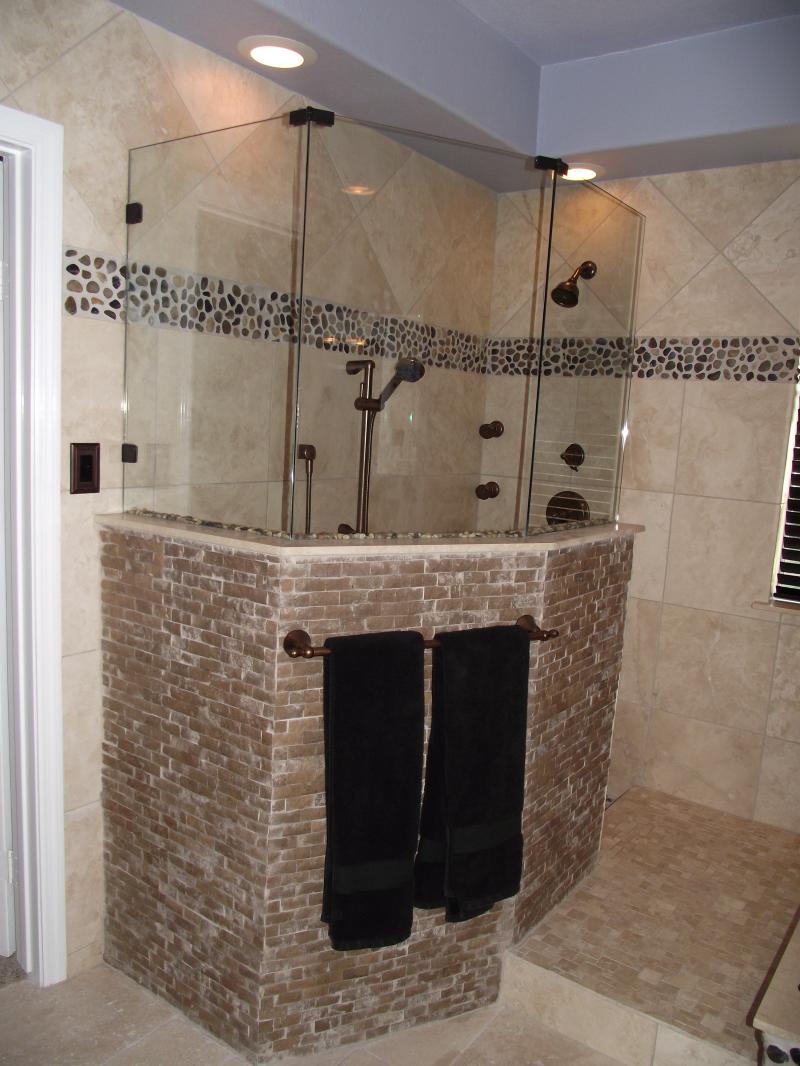
Elements of such building material are made without visible seams, so it looks more aesthetically pleasing than ordinary tiles. Beating the marine theme in the bathroom, you can use artificially created pebbles. Rough large stone goes well with wood elements.
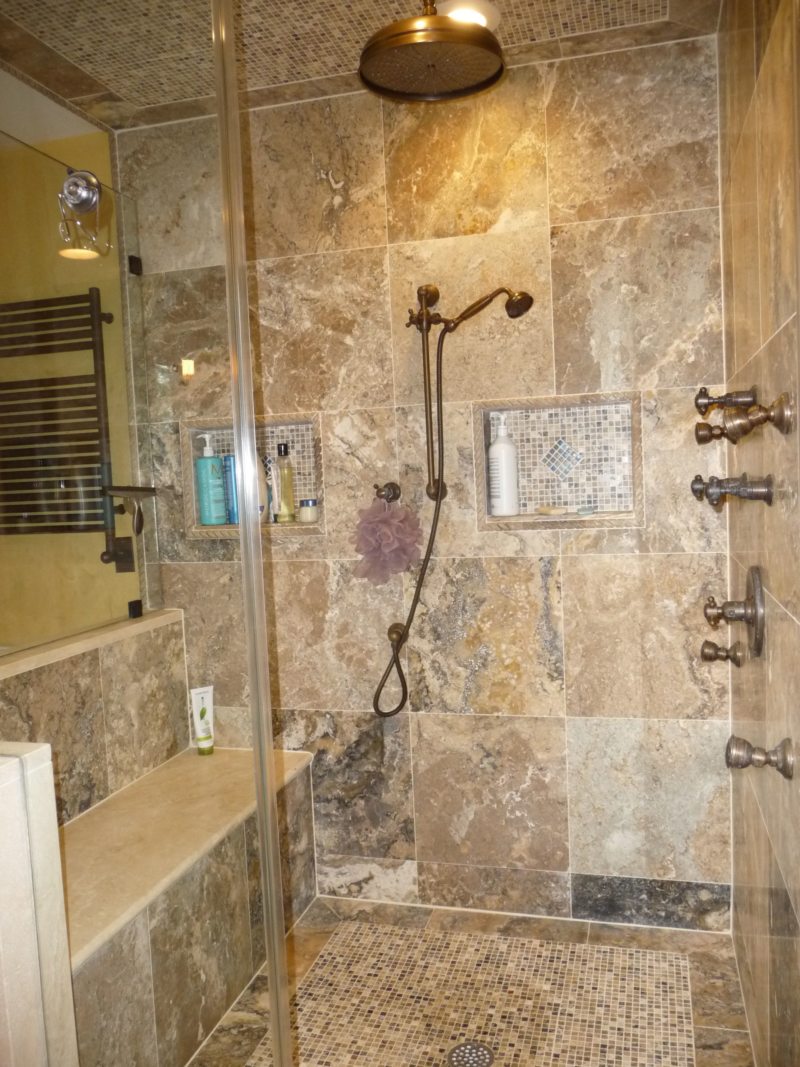
Any room has its own atmosphere, but all of them should eventually become part of the overall ensemble of the entire housing.
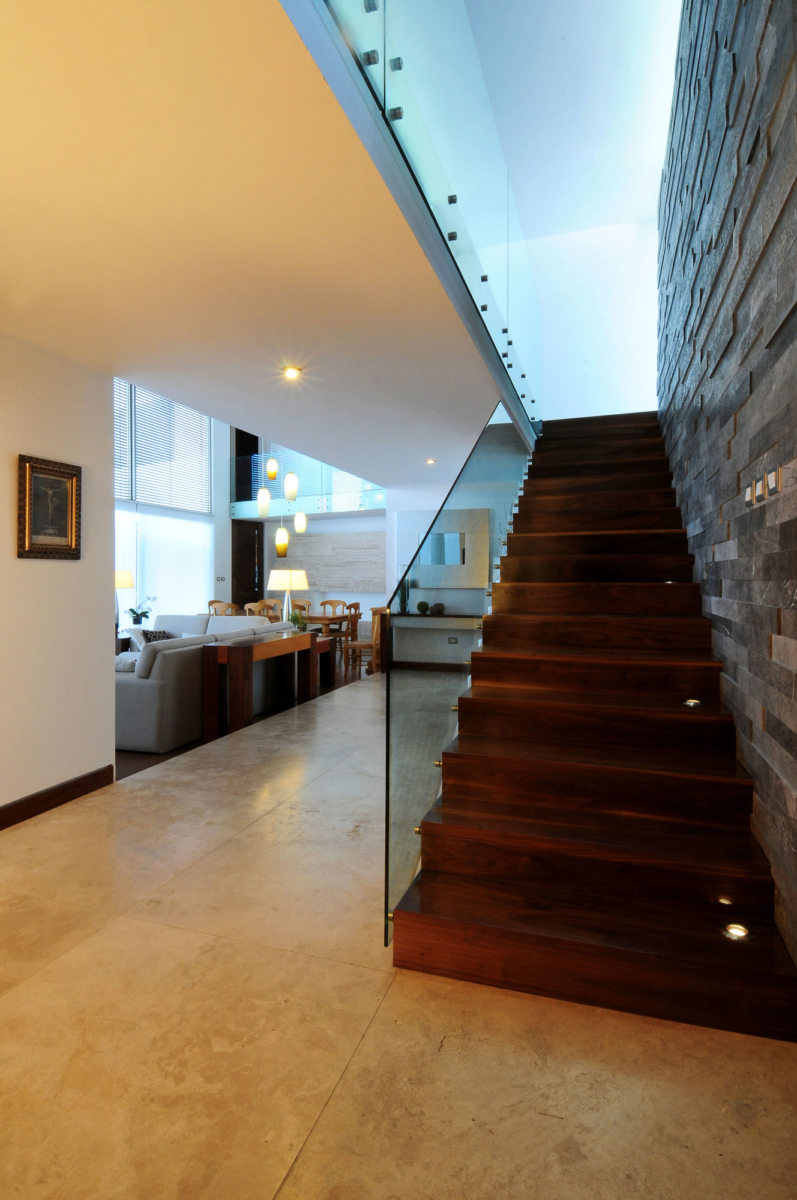
Photo of decorative stone in the interior
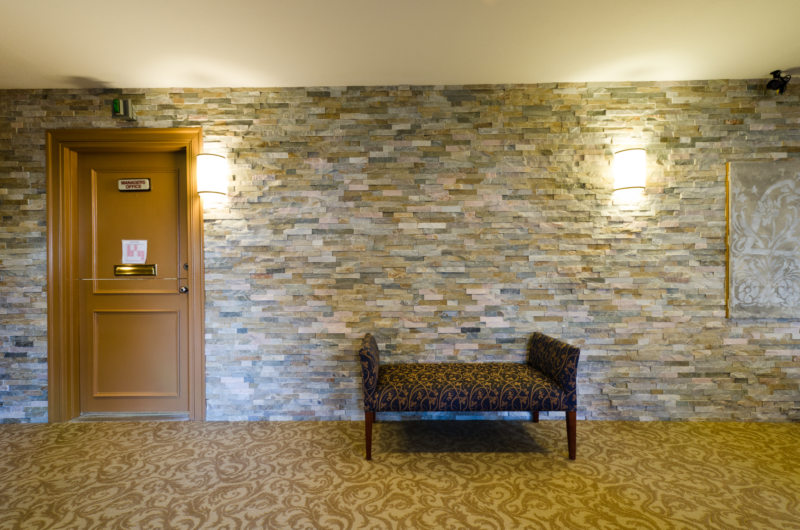
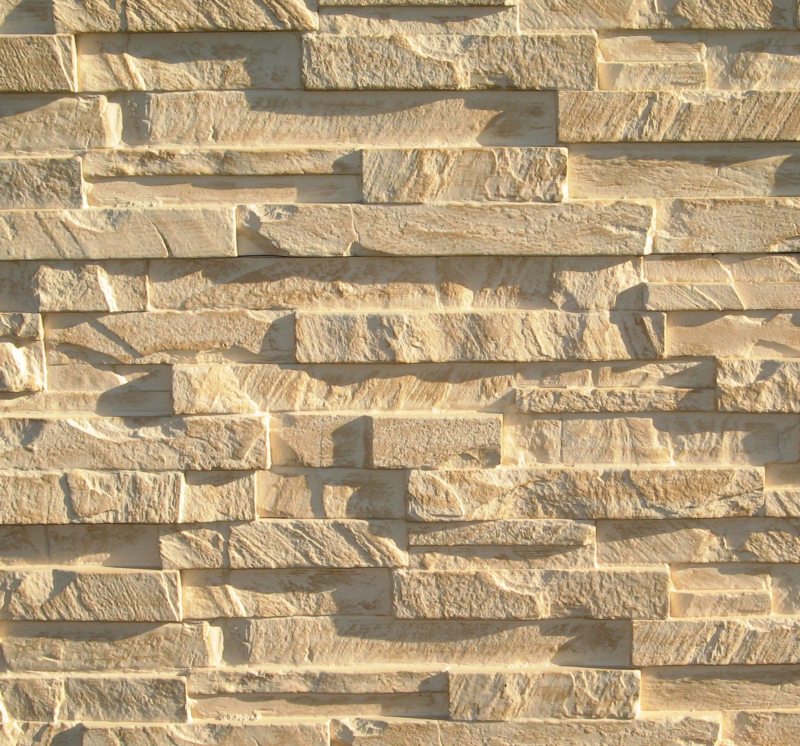
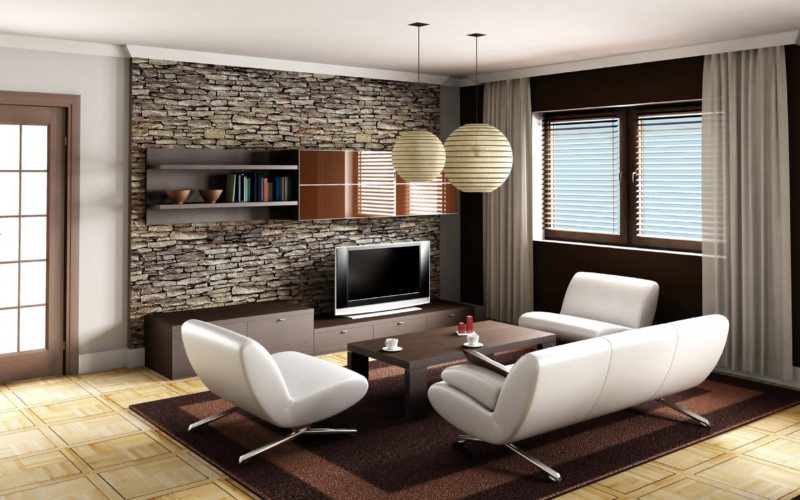
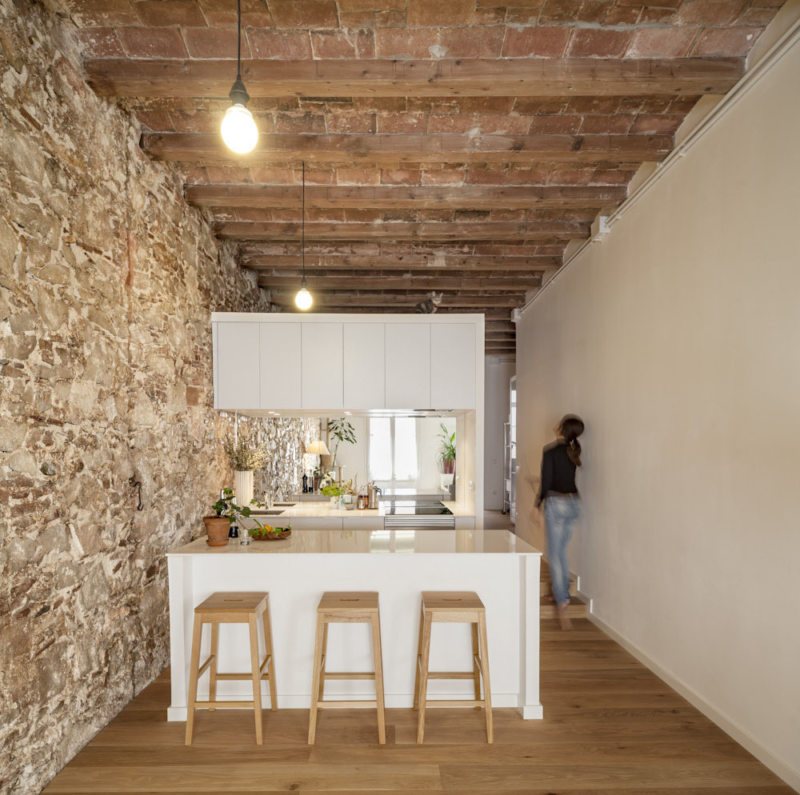
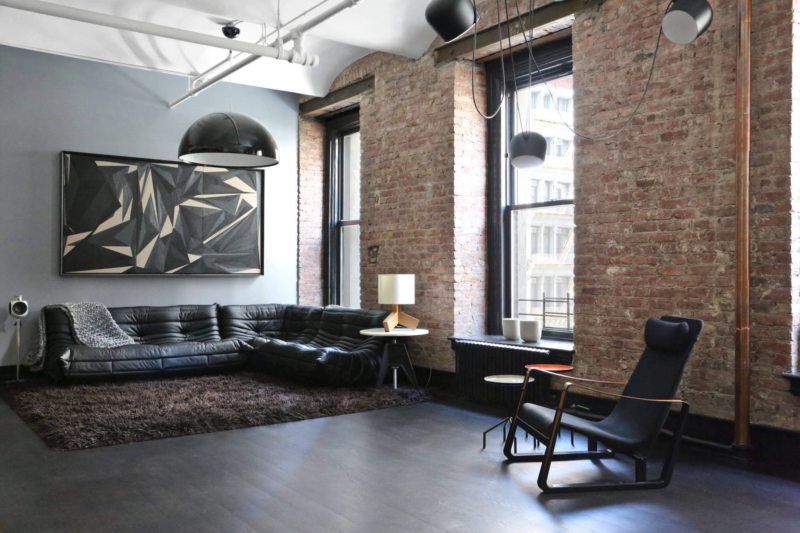
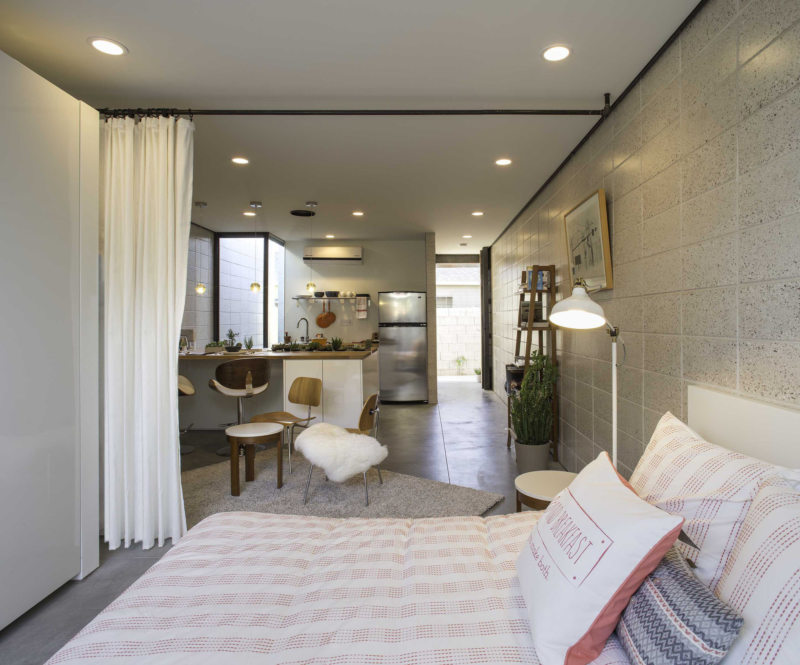
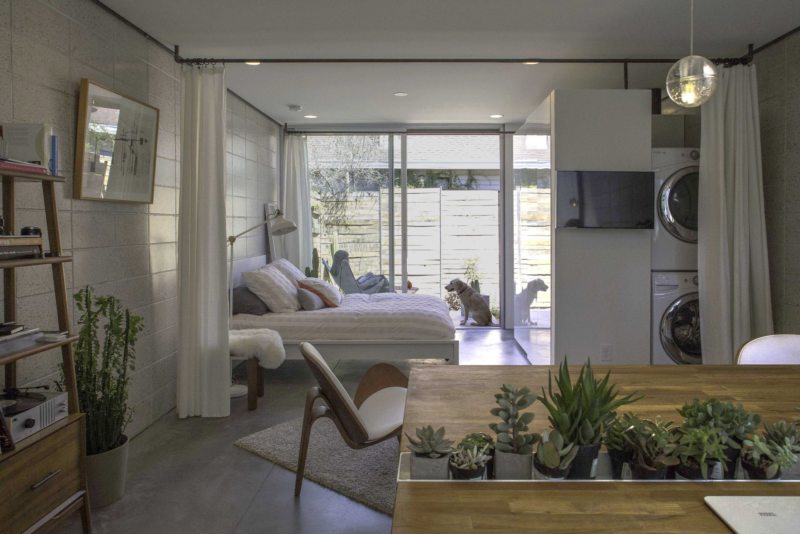
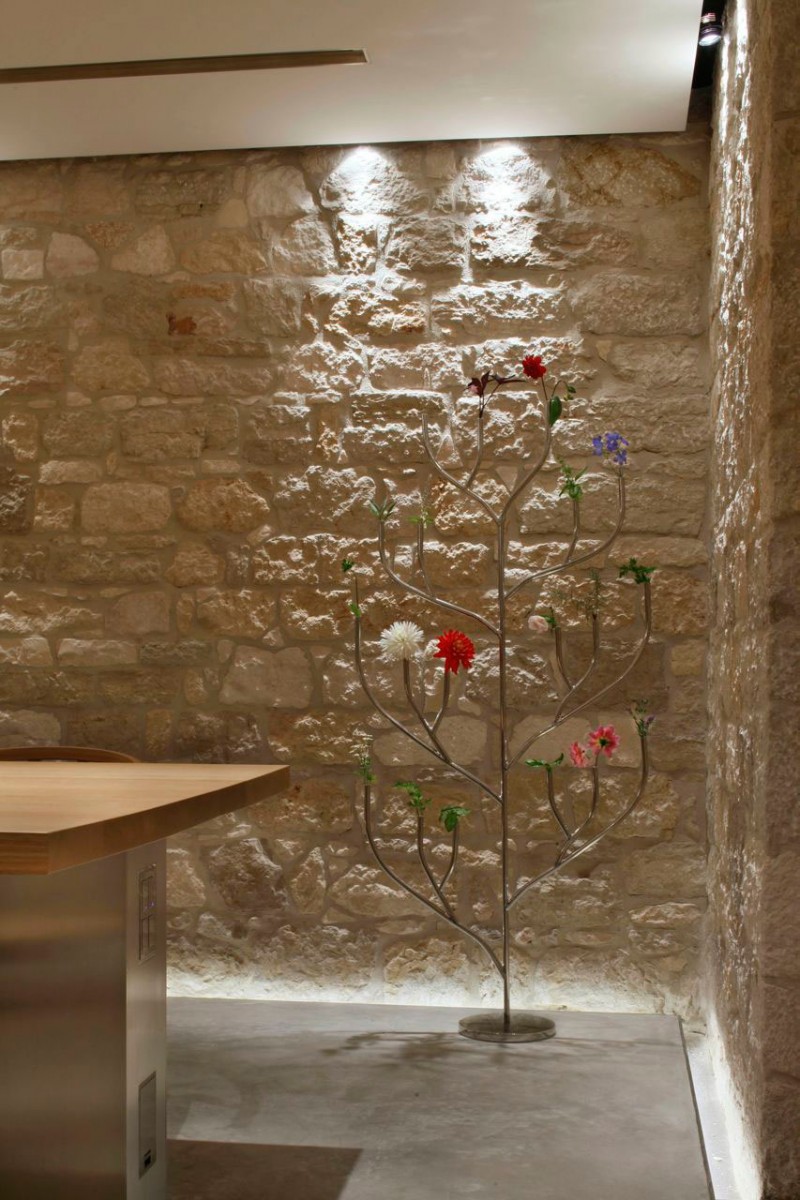
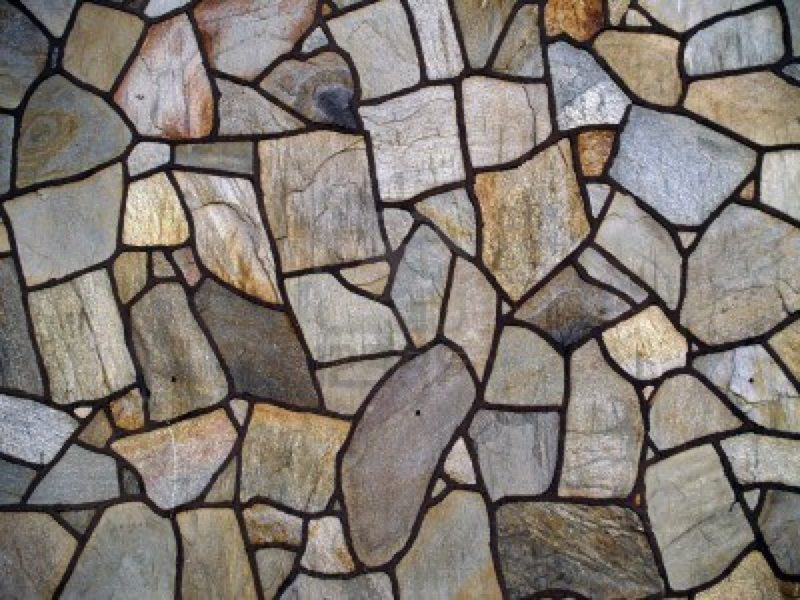
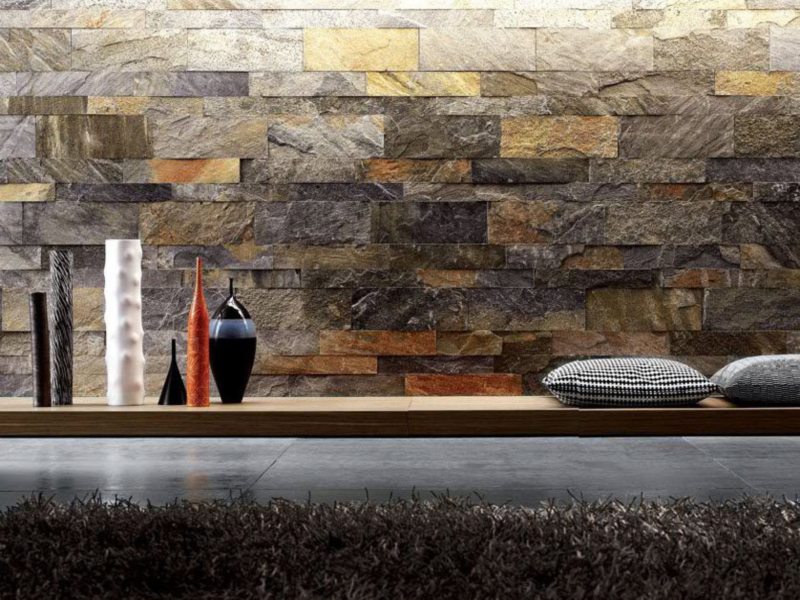
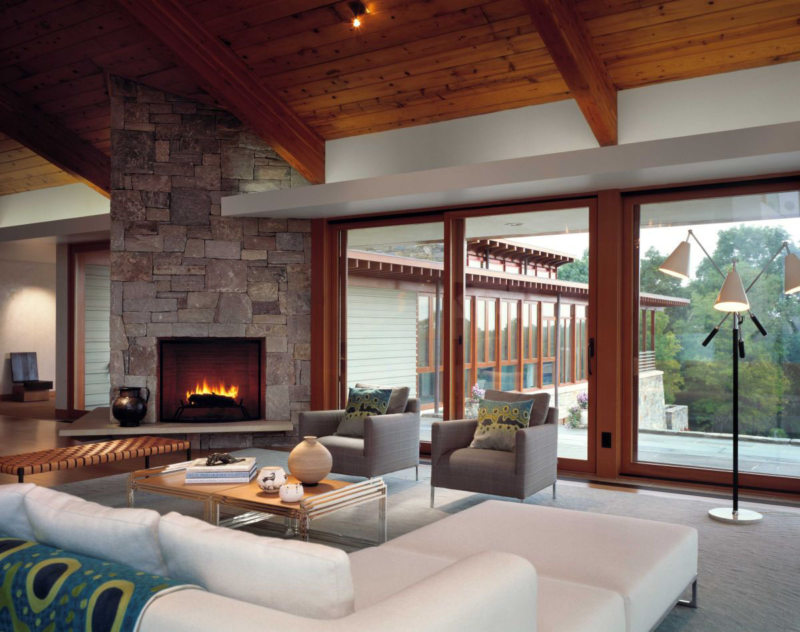
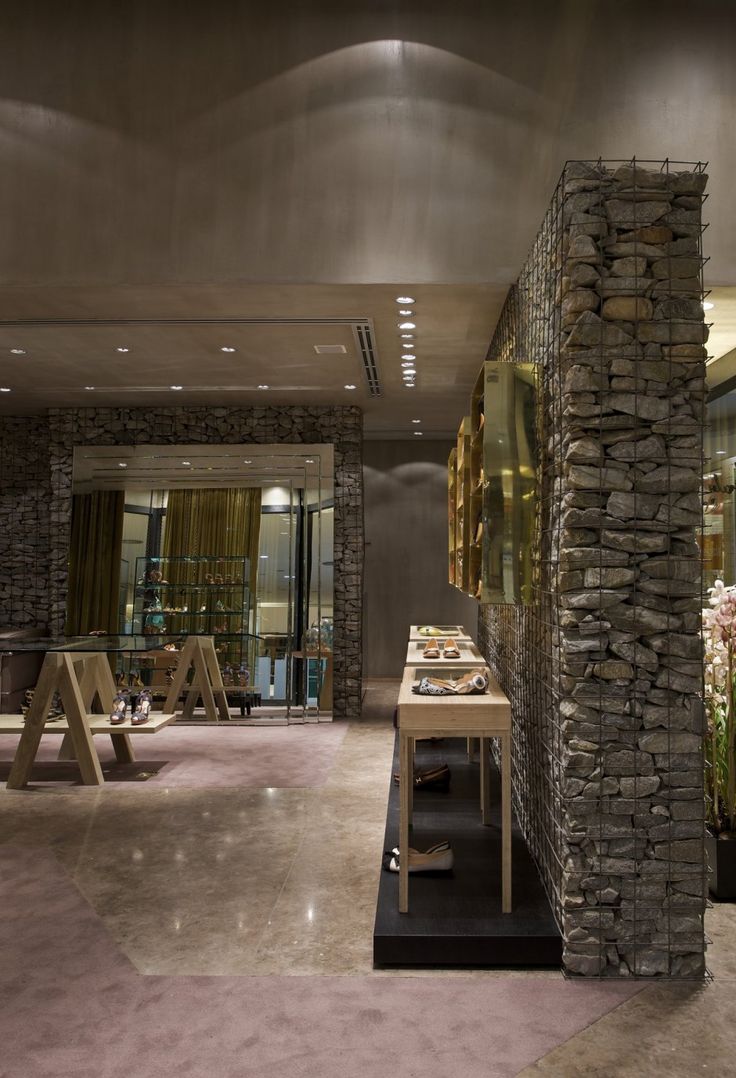
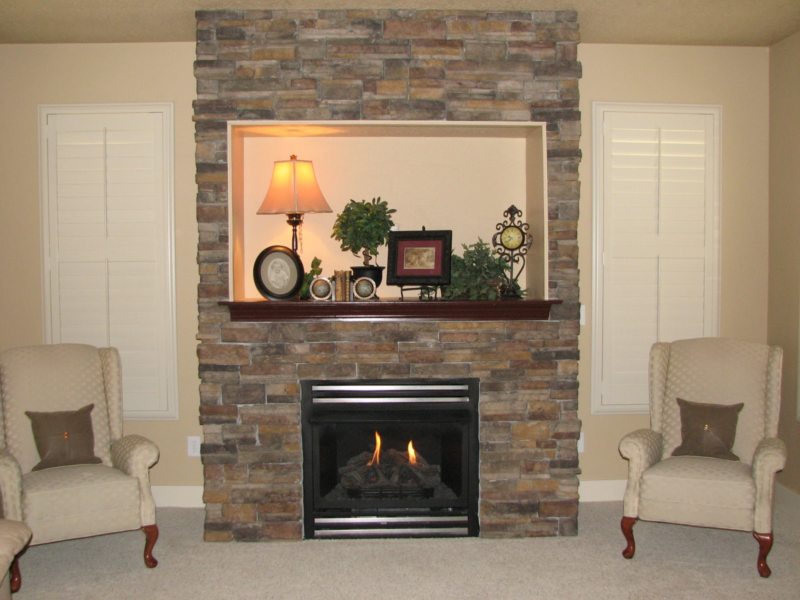
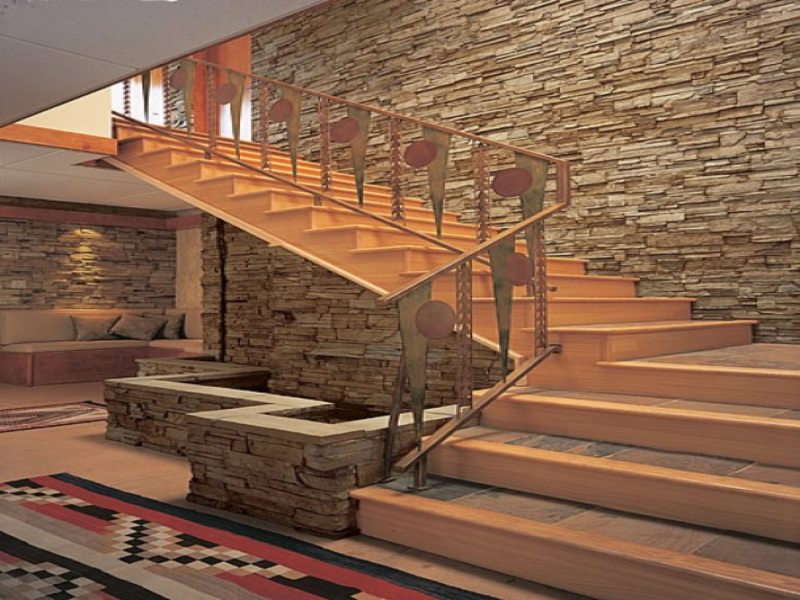
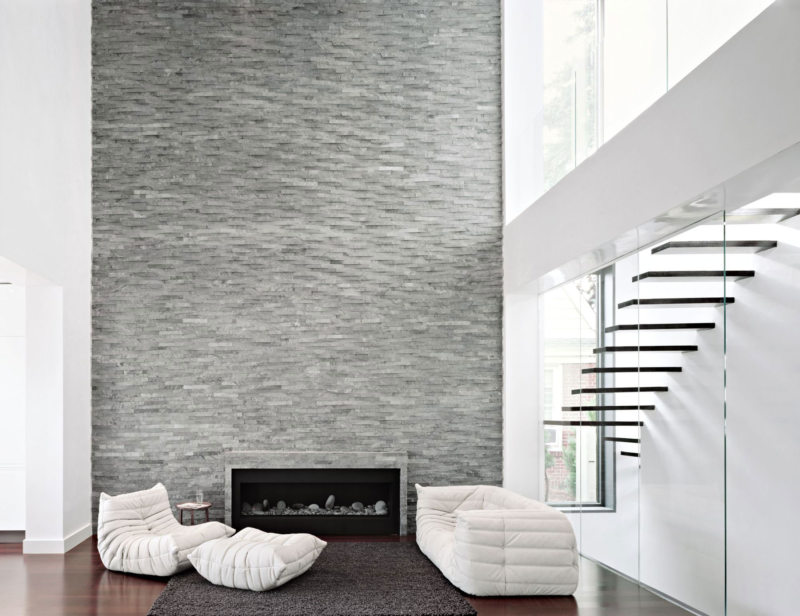
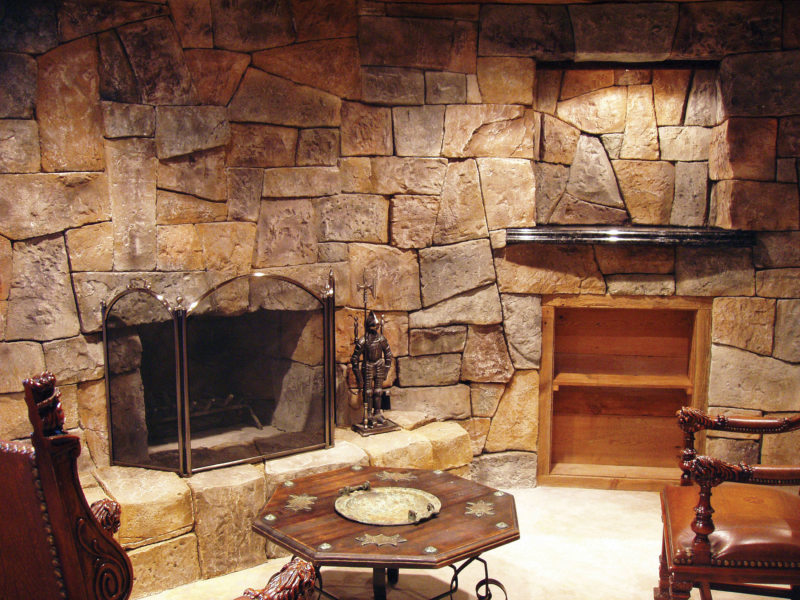
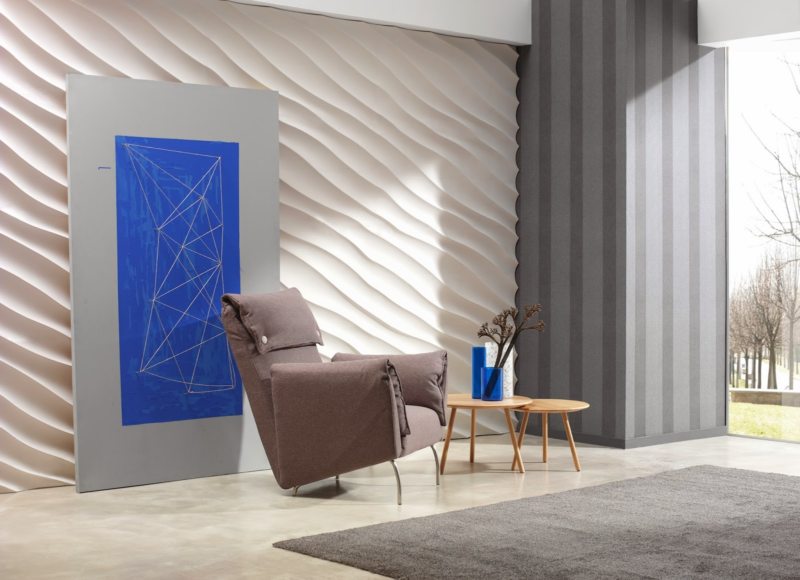
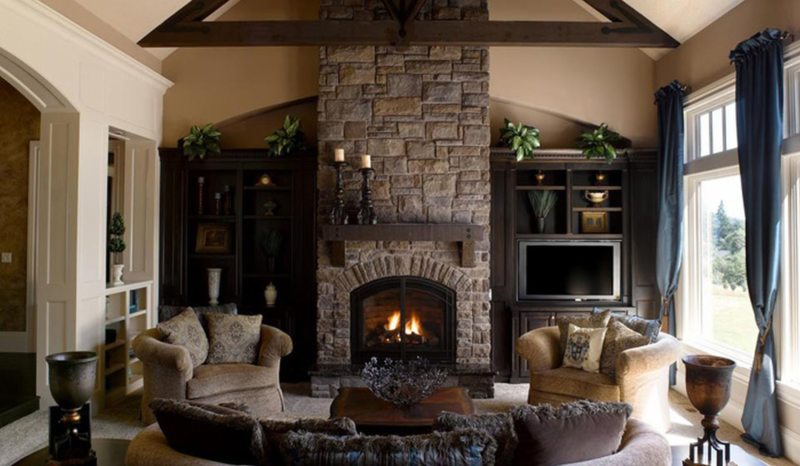
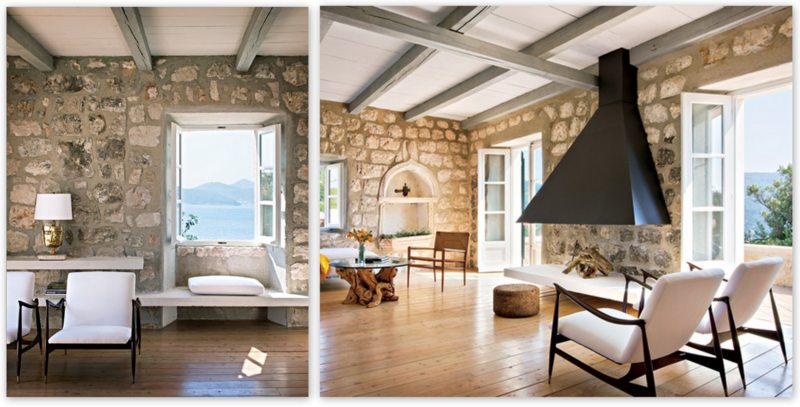
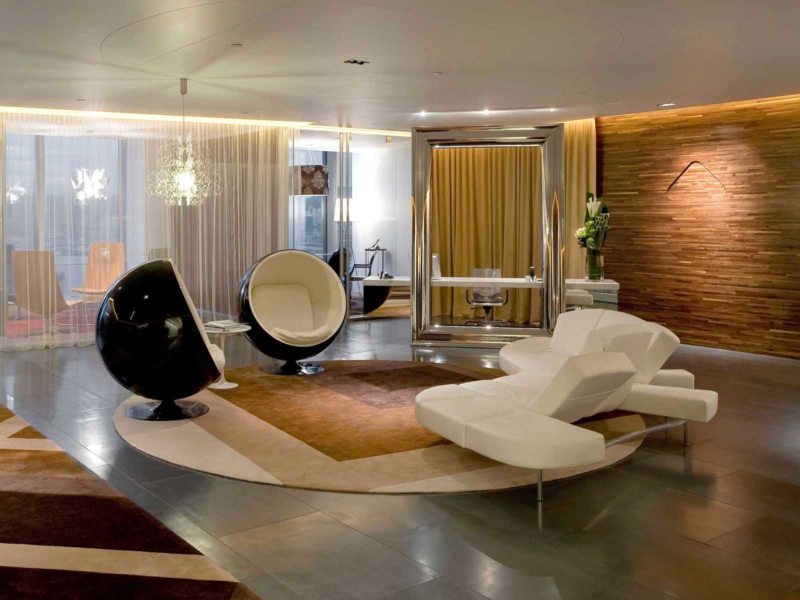
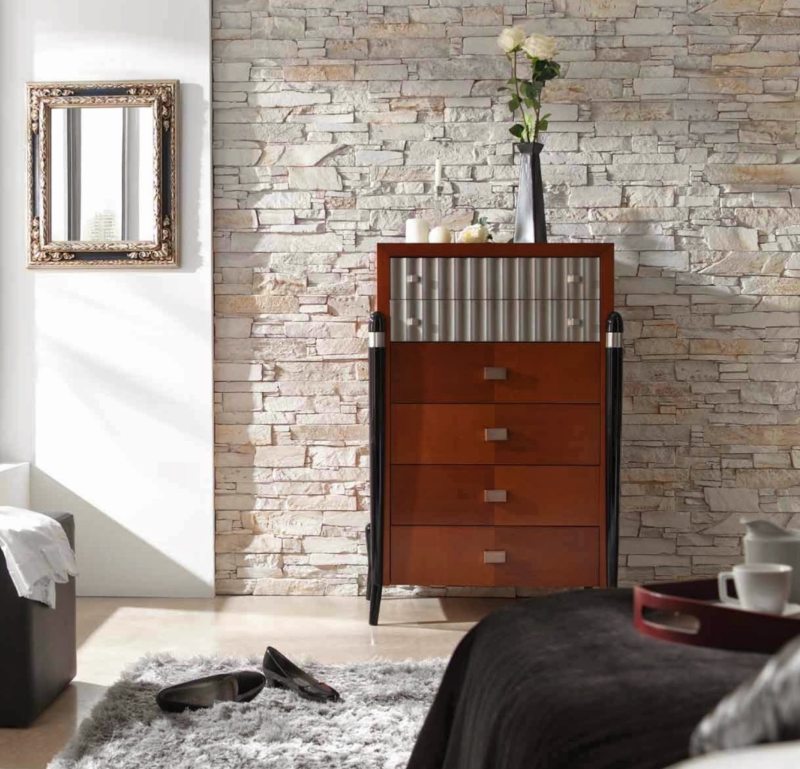
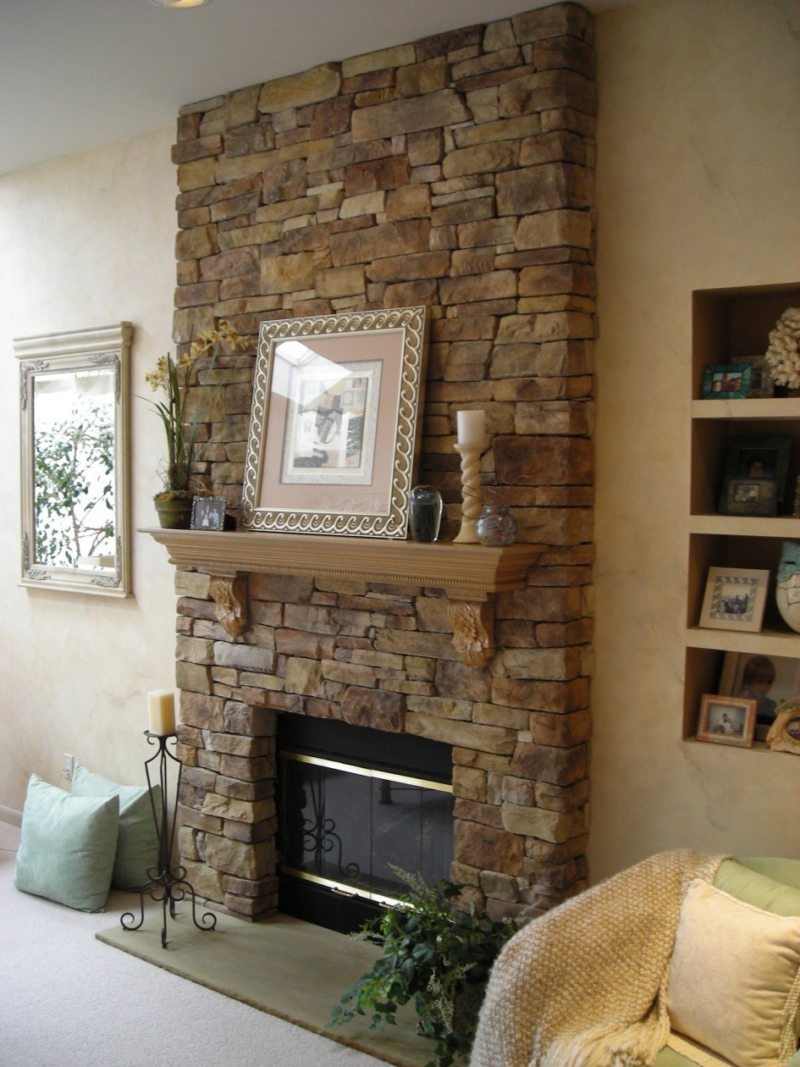
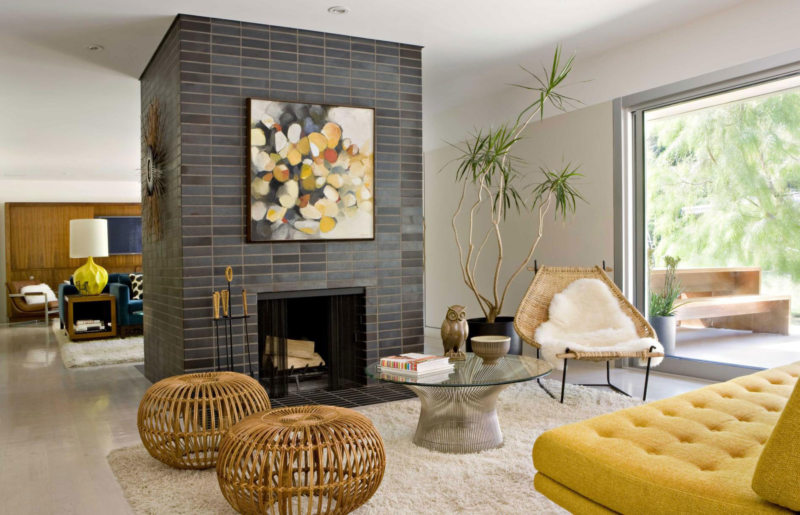
There are many ways to use natural and artificial stone in the interior of the premises. If you approach this issue creatively, connecting fantasy and imagination, you can come up with a lot of original applications of masonry in almost any interior.
Stone in the interior - wall decor ideas with natural stone
Benefits of stone finishing
- Intense and unique texture
- Naturalness
- Excellent sound insulation
- Wide range of colors, textures and prices
- Ease of care and durability
The most common types of stone used in interior design are: limestone, sandstone, brick (we have a separate one about this), slate and coral stone.
Create the right lighting to bring out the texture of the natural stone.
Combine natural stones with warmer materials like fur, cashmere, carpets and fluffy pillows. This will balance the coldness of natural stone.
Add bright color accents warm shades of yellow, orange and red. This will revive the austere atmosphere created by natural stone.
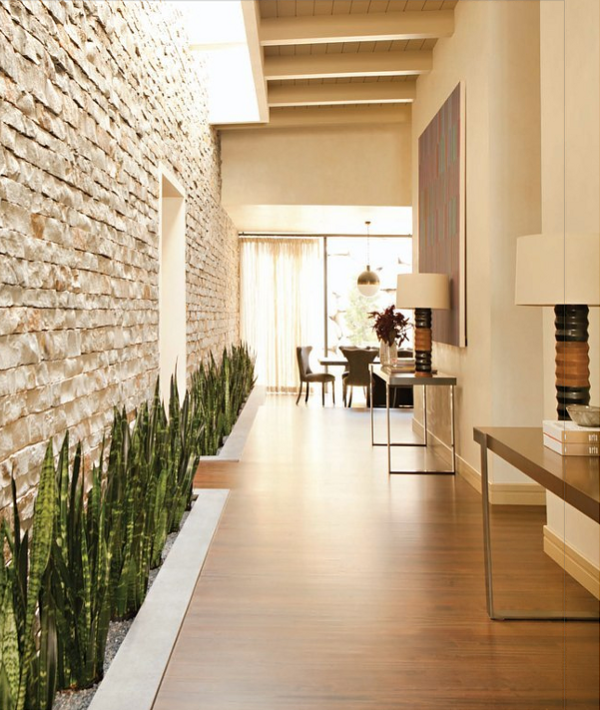
Emphasizing the joints of masonry with contrasting shades, you can emphasize the beauty of natural stone. If you make a masonry of stones of different sizes, then this will add charm to the stone finish.
If the room is not spacious enough, then only part of the wall can be decorated with natural stone. This will allow not to overload the interior and retain all the advantages of walls fully decorated with natural stone.
If you want to create something original, then try stone ceiling. This will create an intimate and warm atmosphere in the interior.
Painting the stonework will allow you to use the texture of the material and at the same time harmonize the interior, making it softer.
Stone walls can be incorporated into any style of interior, however, choosing the right type of stone is important. For example, brickwork is ideal for lofts and modern interiors, while finishing with large stone segments of various shapes works great in interiors. rustic style and in country houses.
To decorate the entire wall with a stone, it is better to use stones various types. Thus, you will bring dynamism to the interior and set the rhythm for the entire space.
#2. Various styles of decorative stone for the home
The use of decorative stone in the interior is an eco-friendly method of creating a luxurious and cozy atmosphere in the room. Finishing the external walls with natural stone is perfect for houses located in mountainous or wooded areas. There are several different styles of decorative stones that can be used both outdoors and indoors. by the most expensive option is the use of natural stone. Some manufacturers offer plywood fake stones that look like natural ones, but are much cheaper than them. Artificial stone is the cheapest option as it is made from concrete and natural ingredients.
Cellular Limestone
Limestone is a relatively soft stone that wears away over time. Cellular limestone has pores that create a feeling of wear when exposed to water. This is a very beautiful and visually attractive decorative stone, which is successfully used for finishing works both interior and exterior.
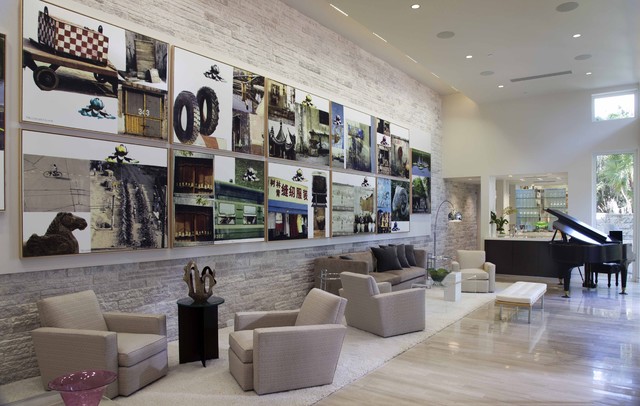
Thin natural facing stone
Facing stone is a tile with a thickness of 2.5 to 3.1 centimeters, made from natural stone and combines the visual appeal of natural rocks with lightness and comparative cheapness. Cladding slabs are much easier to install as they are on average three times thinner and significantly lighter than stone blocks, which reduces transport costs. At the same time, cladding with slabs outwardly looks absolutely like block cladding, and only a specialist can distinguish the first from the second.
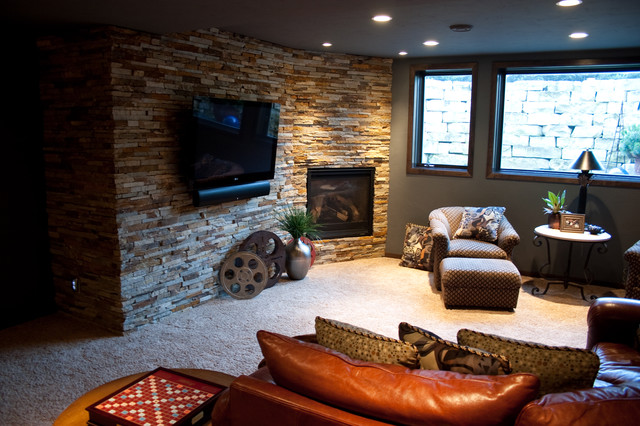
River Pebble
River pebble is a natural type of stone, shaped and smoothed running water. Pebbles are widely used for exterior cladding of houses, and in the interior for finishing fireplaces, aprons in the kitchen and for landscape design flowerbeds in ornamental gardens.
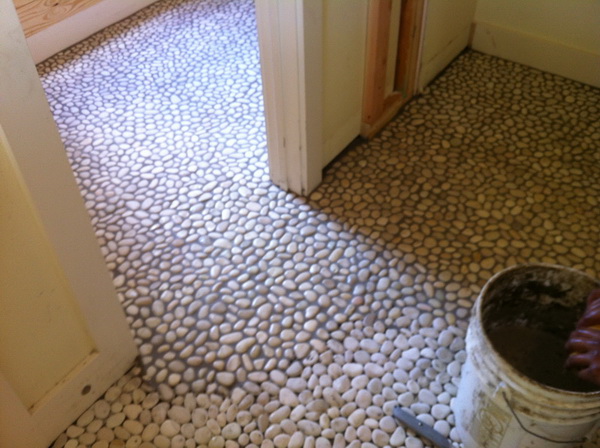
A natural stone
The use of natural stone for exterior and interior decoration is one of the oldest methods in housing construction. Natural stone is mined from quarries and then processed appropriately for use in finishing and construction work. The shape and texture of each type of stone determines the type of application. Natural stone is durable, wear-resistant and easy to care for and maintain, and at the same time you can not worry that they will lose their original appearance over time. However, natural stone is expensive and the construction process itself also requires special expensive equipment.
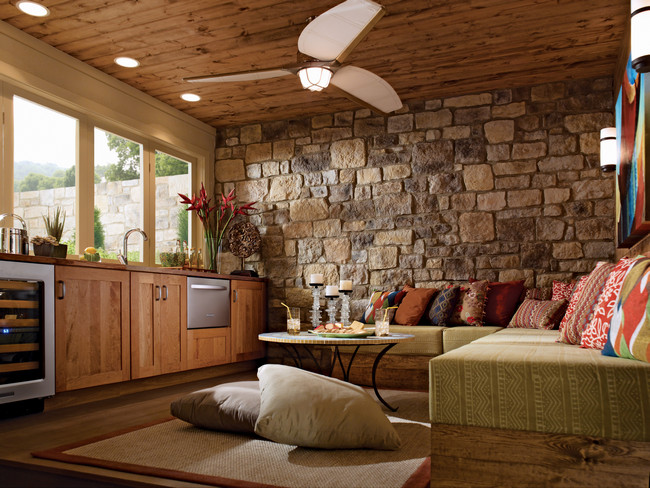
#2. Interior examples
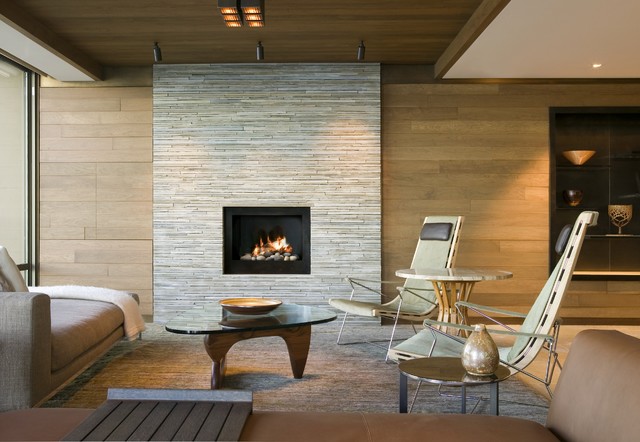
The white fireplace contrasts nicely with the paneled walls and ceiling, creating a stunning place to relax.
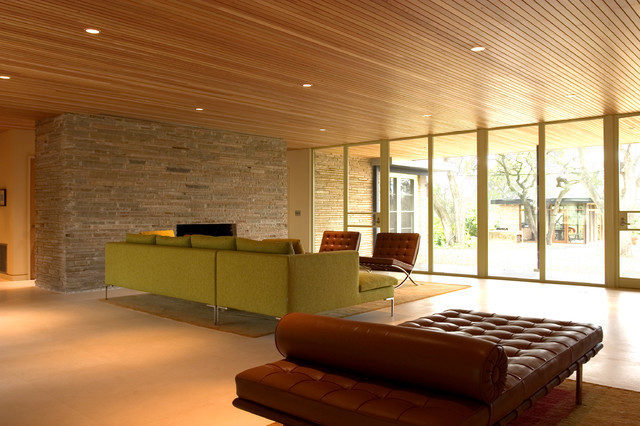
Stone wall decoration looks great in a modern interior.
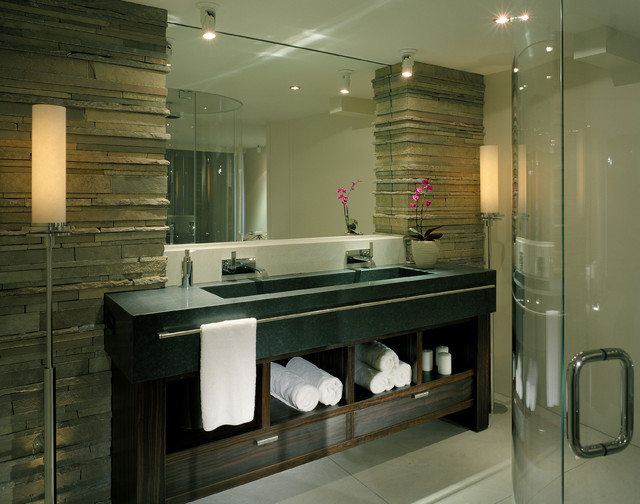
The stone-clad walls that frame the bathroom mirror look like stone columns.
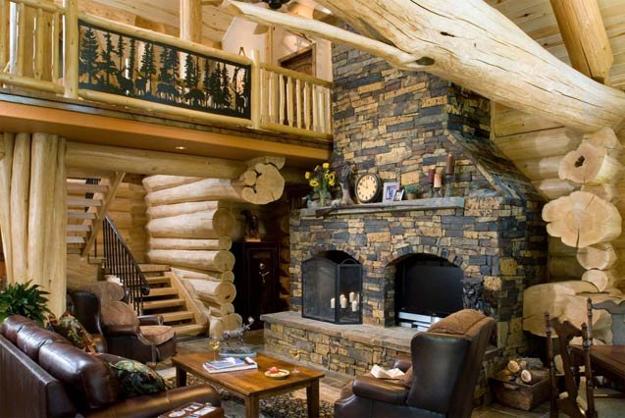
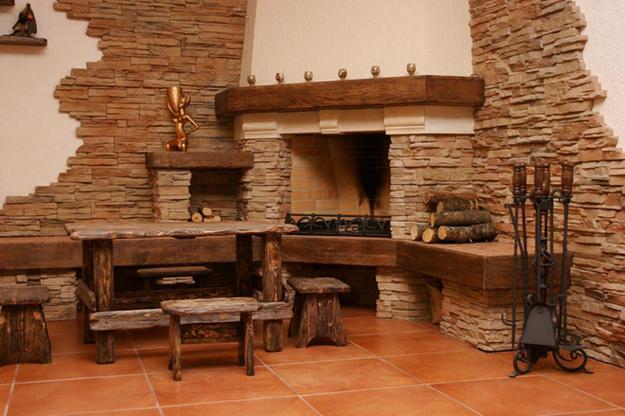
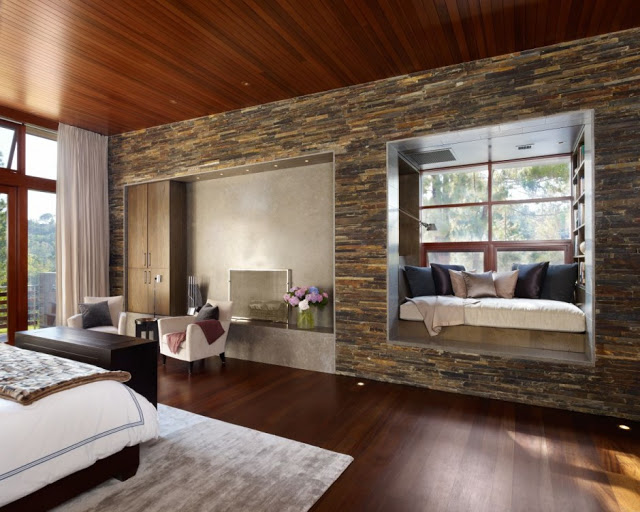
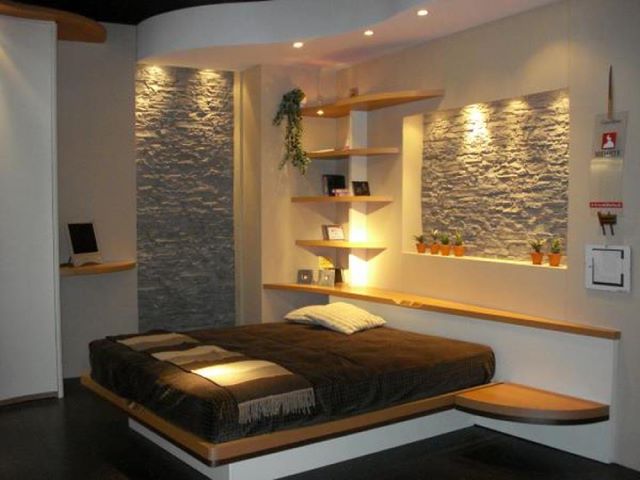
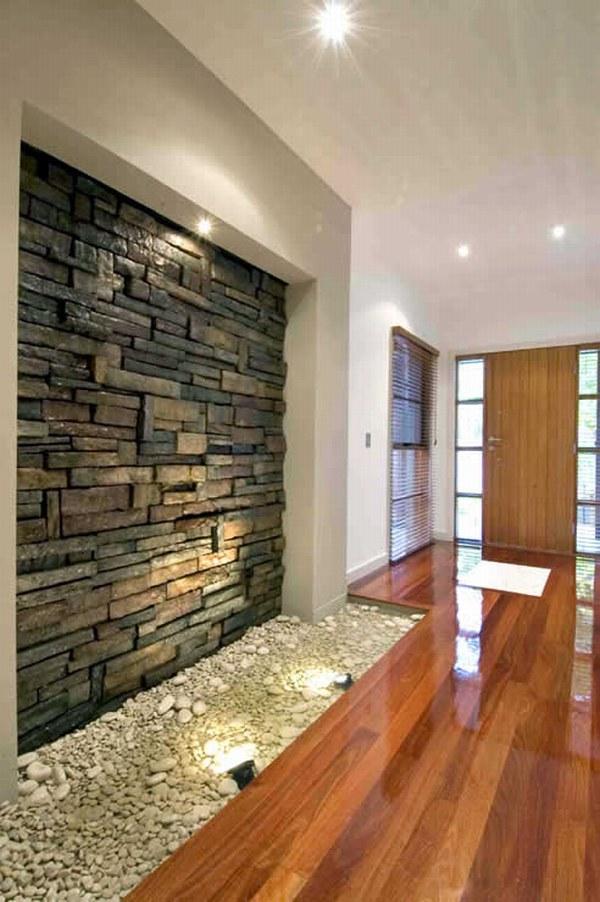
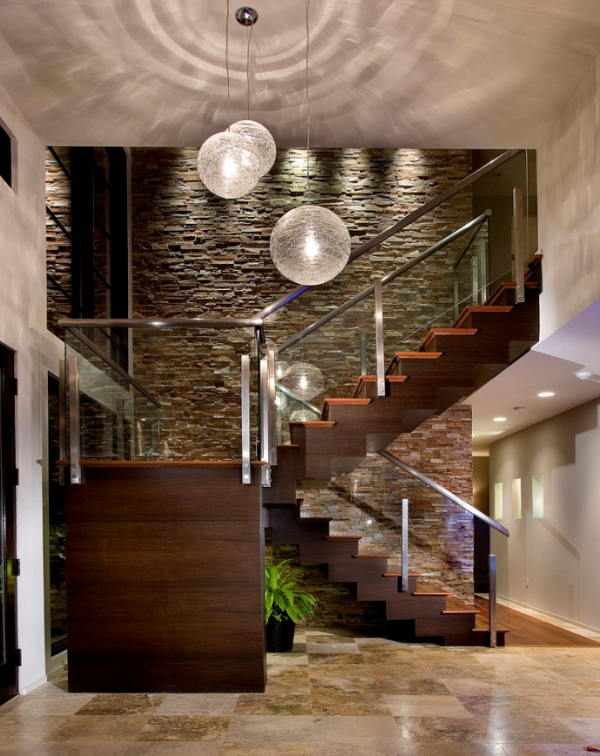
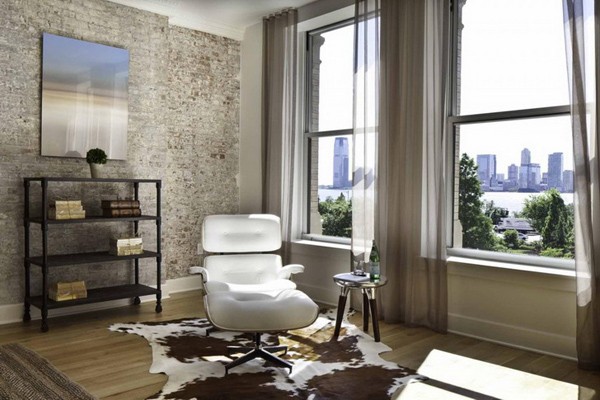 Natural stone in the interior - photo of the living room
Natural stone in the interior - photo of the living room 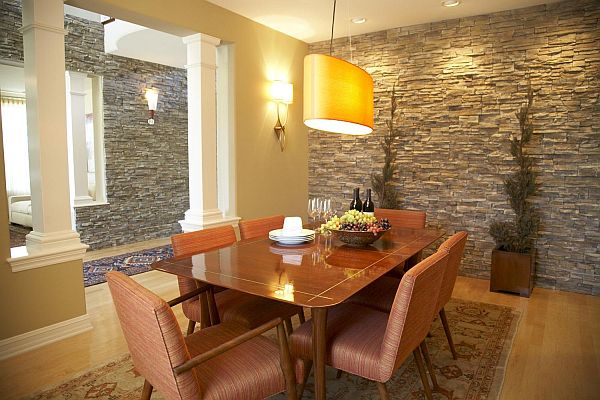
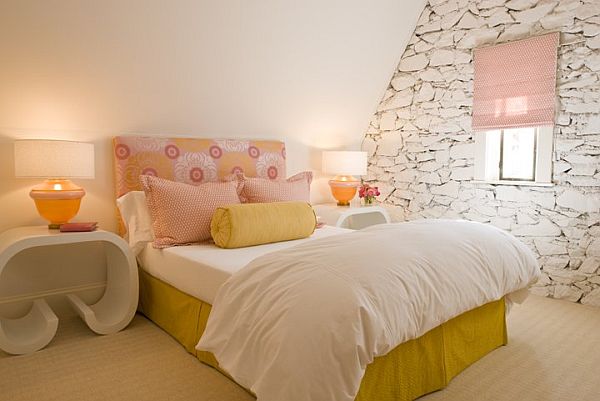
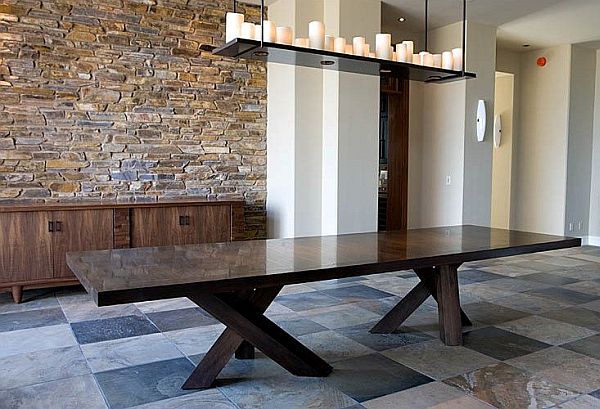
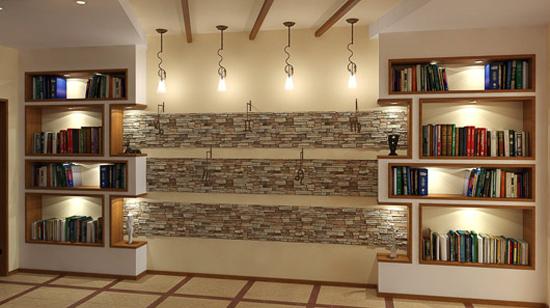
Up, and you are in a fabulous cave of dwarves ... a medieval castle ... or in a huge crevice of a rock owned by giants.
That would be great, right?
But there is nothing easier - all this can be done with your own home. And it is the decorative stone that is the magic wand in such metamorphoses!
natural vs artificial

First you need to decide what type of decorative stone to use to decorate the interior.
Natural stone is one of the most ancient building materials. Its strength, reliability and durability have been tested for centuries. Since ancient times, the premises were decorated with marble, quartzite, granite, onyx, sandstone and other types. natural stone.
But the high cost and a large number of restrictions on use made natural stone not a very popular material for interior decoration.
And so it was until recently, until the invention of artificial stone.
Decorative stone has become much cheaper and more accessible.
man created artificial decorative "stone" of cement, light filler and dye. The most diverse and bizarre forms appeared, and what a wealth of choice of textures ...
Plus, this decor is much lighter than natural stone, and it is much easier to lay it.
What can be decorated with stone?
Decorative stone can decorate any surface in the house - it all depends on your imagination.
Walls.
You can lay out a whole panel or drawing from stone, you can decorate or highlight certain areas in the room, or you can simply decorate the room in an unusual and bright way.
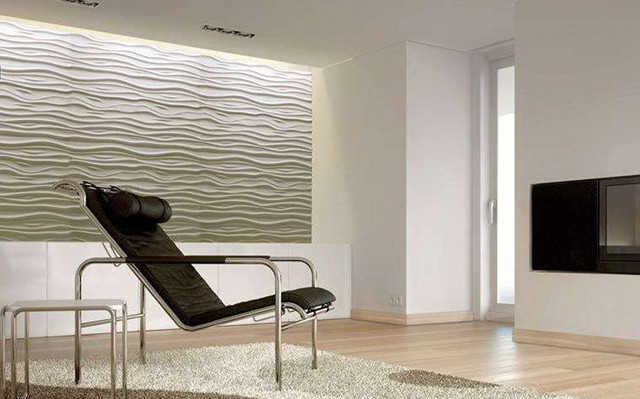 The original structure of the stone.
The original structure of the stone.
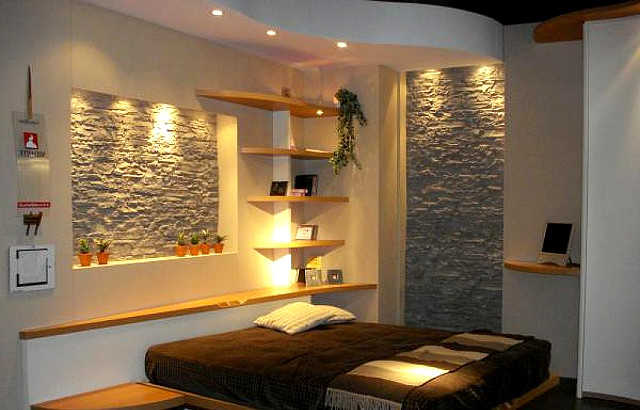 Mixing of finishing materials.
Mixing of finishing materials.
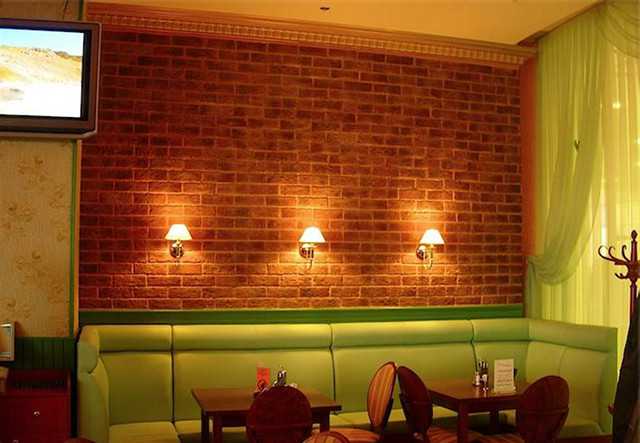 The use of decorative stone brickwork- a win-win.
The use of decorative stone brickwork- a win-win.
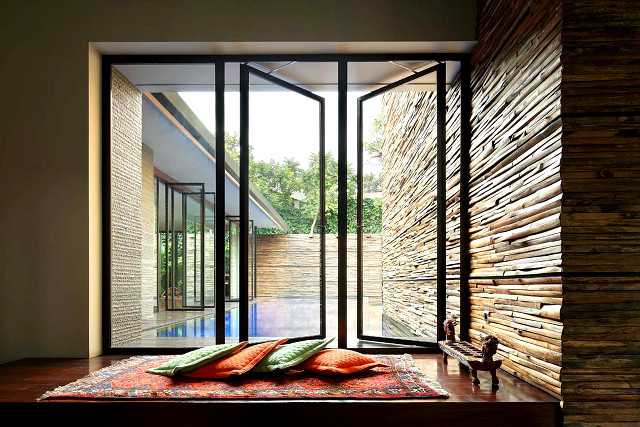 A light monochromatic wall is opposed to a bright and lively stone.
A light monochromatic wall is opposed to a bright and lively stone.
doors
The space near the door and the door can be highlighted with a decorative stone. A stone-paved arch is both an element of the Middle Ages in your apartment and an original interior detail.
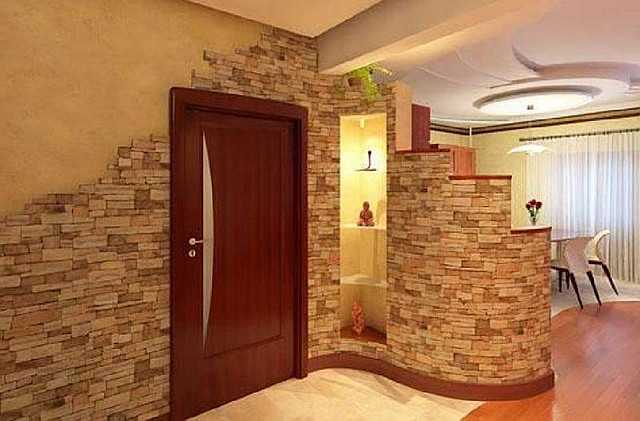 Door to fairy world...
Door to fairy world...
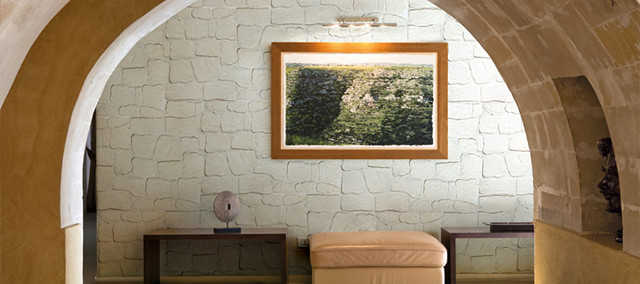 Original brick arch.
Original brick arch.
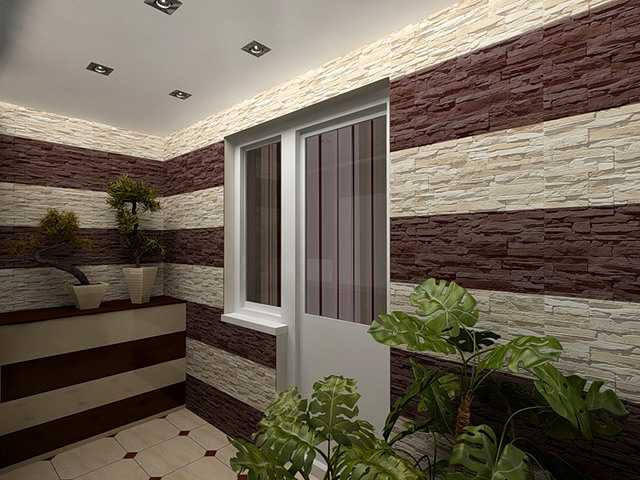 The color of the decorative stone echoes the general style of the interior.
The color of the decorative stone echoes the general style of the interior.
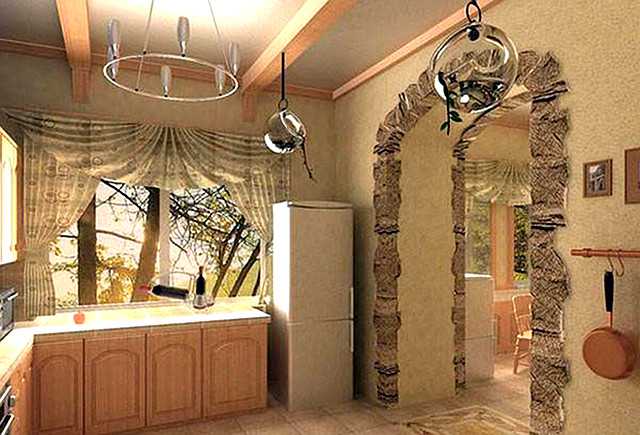 The decorative stone arch in the photo adds originality to the room.
The decorative stone arch in the photo adds originality to the room.
floors
The stone floor is not surprising - it is an ancient invention of mankind.
For the floor, the widest selection of stone is presented.
But there is one limitation regarding the artificial "stone": this material is not suitable for the floor due to its fragility. Some types of such decor can easily be pierced with something sharp or cut. Imagine what will happen if you walk on it?
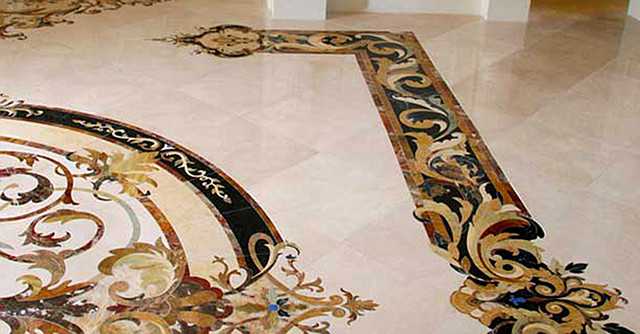 Colors, shades, patterns, drawings ... Everything your heart desires!
Colors, shades, patterns, drawings ... Everything your heart desires!
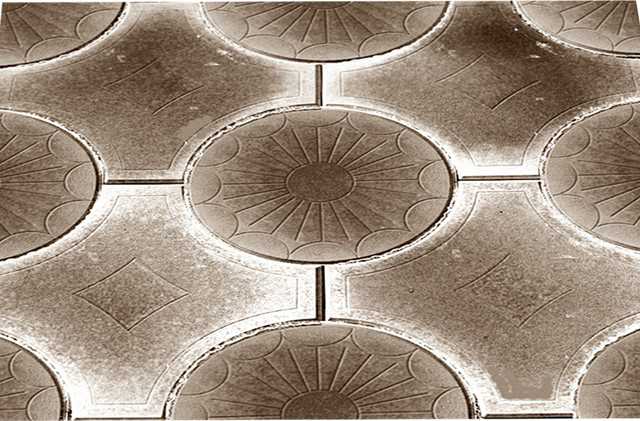 Original imitation of a street sidewalk.
Original imitation of a street sidewalk.
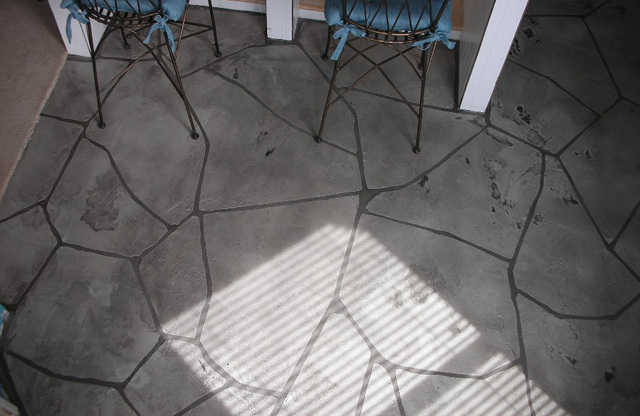 The floor, paved with decorative stone, can become a "chip" of the room.
The floor, paved with decorative stone, can become a "chip" of the room.
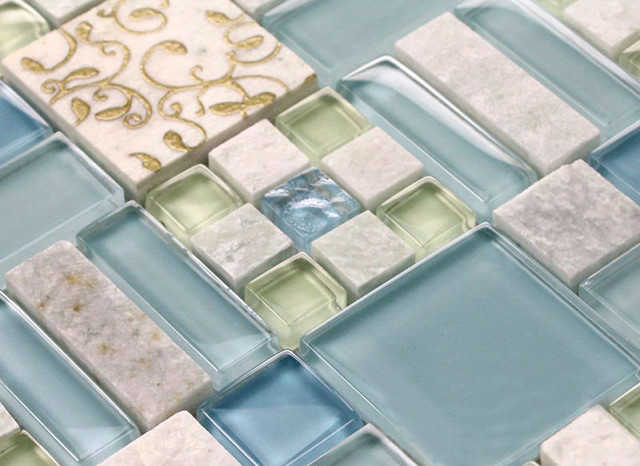 A mixture of textures, shapes, patterns and colors gives an amazing result.
A mixture of textures, shapes, patterns and colors gives an amazing result.
Fireplace
Decorative stone in the interior is often associated with a fireplace.
If you have a brick fireplace, you can also finish it with stone - try mixing different colors and textures.
Well, when designing an electric fireplace, there is a wide scope for imagination.
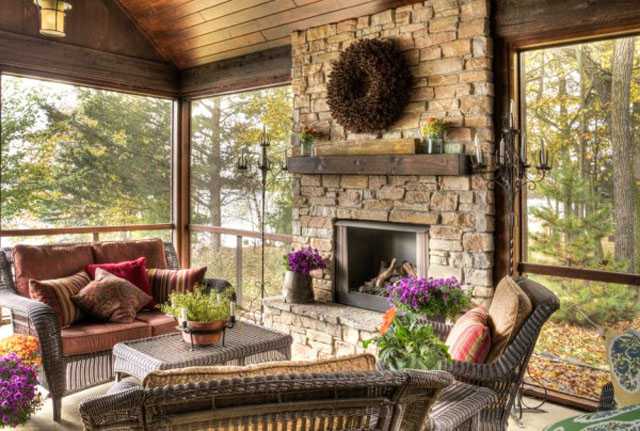 Stone fireplace on the terrace - what could be cozier!
Stone fireplace on the terrace - what could be cozier!
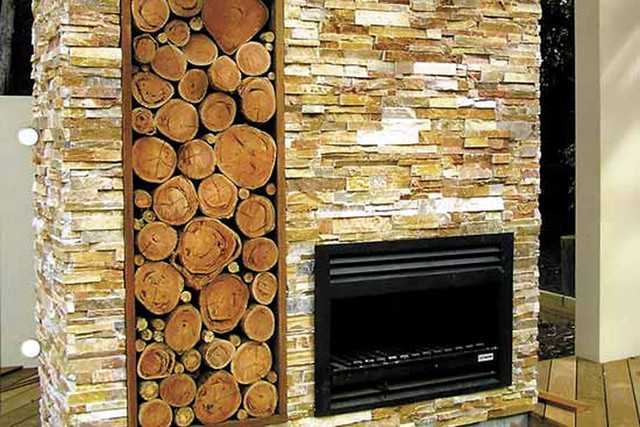 An interesting combination of structural stone and woodgrain panels. Firewood and fireplace.
An interesting combination of structural stone and woodgrain panels. Firewood and fireplace.
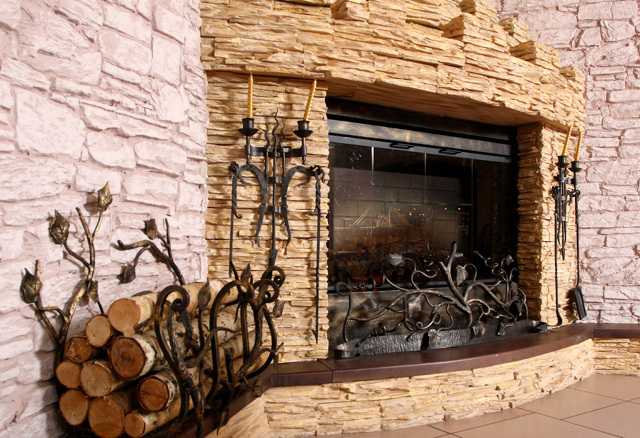 In a “cold” interior, you can play on the contrast and emphasize the warmth of the fireplace with a hint of facing stone.
In a “cold” interior, you can play on the contrast and emphasize the warmth of the fireplace with a hint of facing stone.
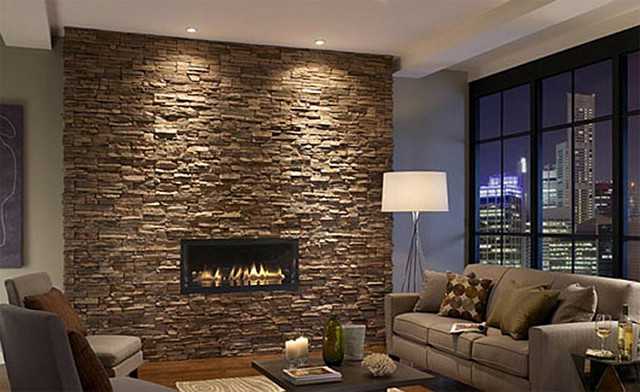 The fireplace area is decorated with decorative stone.
The fireplace area is decorated with decorative stone.
Are there any rules for using decorative stone?
Decorative stone is now more popular than ever.
This decorative element allows you to bring a special aesthetic to your home, even if it is decorated in high-tech style.
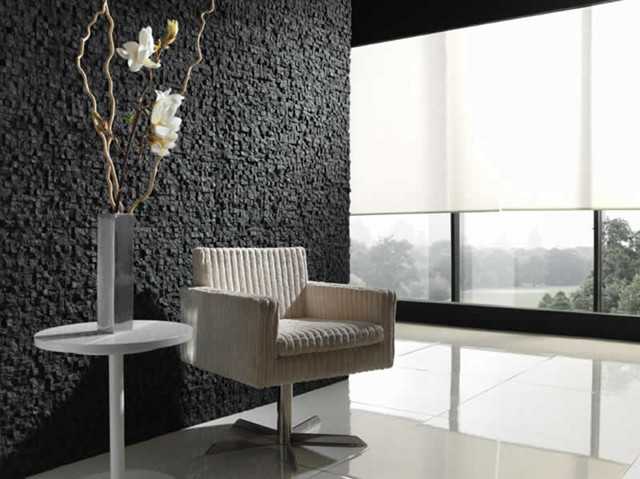
But for successful laying of decorative stone, several rules must be observed:
- Add light.
Decorative stone, even in light colors, reduces lighting- such is his structure. Therefore, keep in mind that additional light sources will be needed. Dark stone must be alternated with light plain wallpaper or plaster. - Narrow spaces - rather no than yes.
The rule follows from the previous one. In a narrow room, lighting is not very good anyway, and a stone can even give gloom and unsightliness. - Don't overdo it.
If your goal is to arrange a hobbit cave in a single apartment, then, of course, stick to the principle: the more the better. If it's the opposite, be careful and don't get carried away using decorative stone. - Rough is not always bad.
A place for original decorative material can also be found in a tender girl's bedroom. A mixture of styles and deliberate rudeness can be very useful and will give the interior a special twist. - Use live plants.
Imagine a stone in its immediate habitat - in nature. Have you seen bare rocks? I don't want to repeat this in my apartment. That's why it is worth thinking about a combination of decorative stone and lively lush greenery.
Rough stone walls are characteristic of the rustic style. If you want to stylize, then do not forget about the possibilities of decorative stone trim.
The stone will not be superfluous when decorating a vintage kitchen or bathroom. Find out more about the use of vintage style in interiors.
When choosing a shade of stone finishes, you need to remember the rules color solutions. We talk about color combinations in the kitchen on the page.
Decorative stone in your apartment
Living room
It is here that you invite dear people, it is in this room that the whole family often gathers, it is the living room that I would like to make especially cozy, unusual and interesting.
Decorative stone is most often used in the interior of the living room..
Playing with this material, you can combine the seemingly incongruous. The volume and texture of a decorative stone can work wonders.
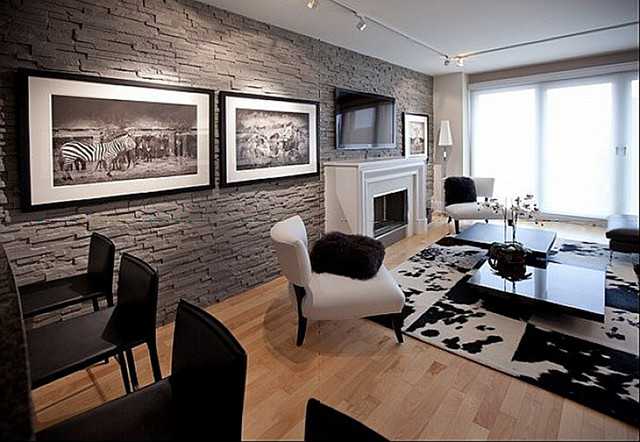 The gray stone wall fits perfectly into the monochrome composition of the living room.
The gray stone wall fits perfectly into the monochrome composition of the living room.
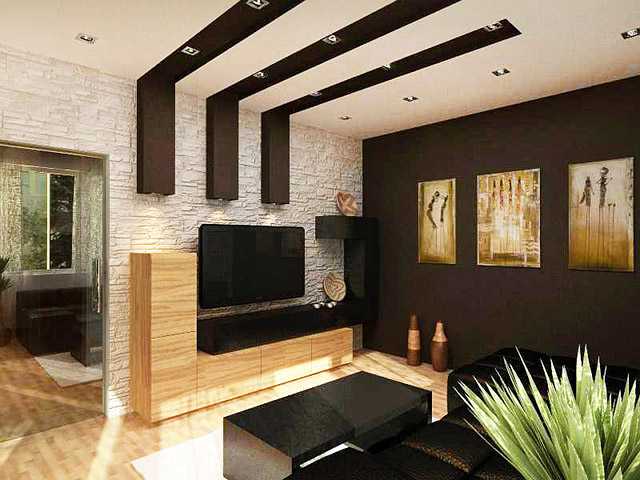 Light decorative stone provides contrast and emphasizes interior elements in ethno style.
Light decorative stone provides contrast and emphasizes interior elements in ethno style.
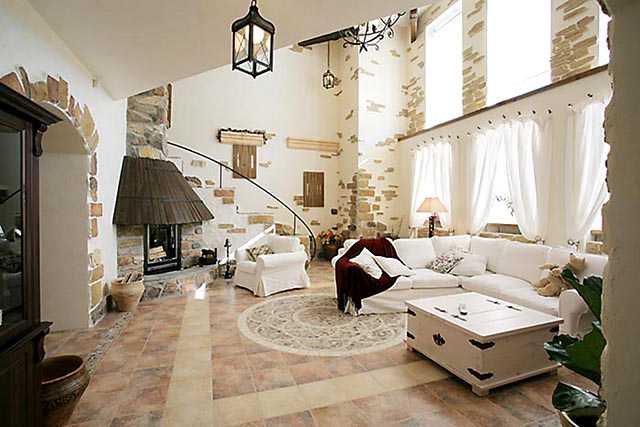 The scattered decorative elements enliven and domesticate the cold white walls, echoing the floor.
The scattered decorative elements enliven and domesticate the cold white walls, echoing the floor.
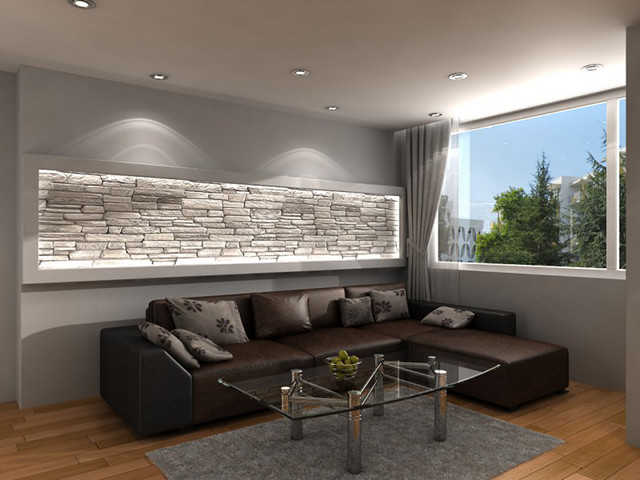 The stone here is not just a decoration - it is a whole panel, decorated with a frame.
The stone here is not just a decoration - it is a whole panel, decorated with a frame.
Kitchen
Finishing with decorative stone will transform any kitchen.
Even the simple design of the "apron" in the work area will make the interior "play up". You can select a dining area, a bar counter, an extractor hood or a refrigerator.
Combine colors, textures or work in contrast. But do not forget about the lighting and the size of the room.
In a small room, the stone will overload and "crush" the space.
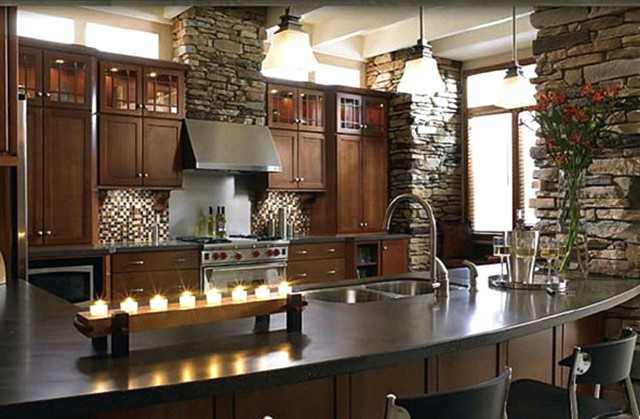 Classic kitchen furniture is combined with deliberately rough and “sloppy” stone. Strict lines of furniture and appliances are diluted with stones of different shapes, sizes and even colors. The kitchen "apron" also echoes the design of the walls. With such a design, it is important to strike a balance.
Classic kitchen furniture is combined with deliberately rough and “sloppy” stone. Strict lines of furniture and appliances are diluted with stones of different shapes, sizes and even colors. The kitchen "apron" also echoes the design of the walls. With such a design, it is important to strike a balance.
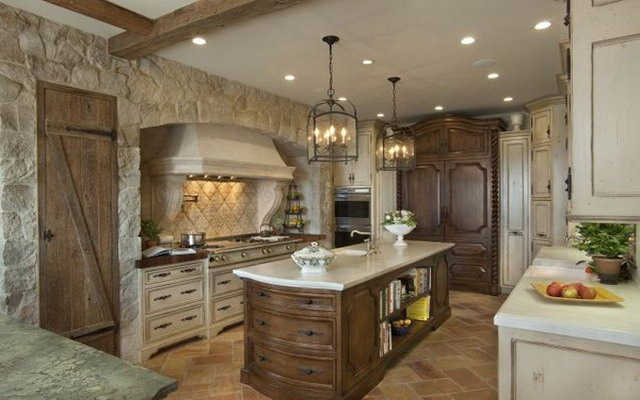 Combine the incompatible. Modern materials, vintage furniture and decorative stone in rustic kitchen.
Combine the incompatible. Modern materials, vintage furniture and decorative stone in rustic kitchen.
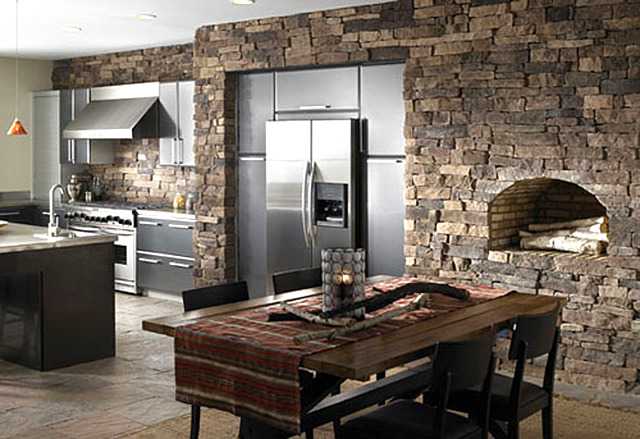 A mixture of high-tech and country styles. Stonework that turns into a rustic stove - and plain silver appliances and furniture. Canvas of rough fabric, which is a tablecloth - and a strict tabletop.
A mixture of high-tech and country styles. Stonework that turns into a rustic stove - and plain silver appliances and furniture. Canvas of rough fabric, which is a tablecloth - and a strict tabletop.
Contrast is always unusual.
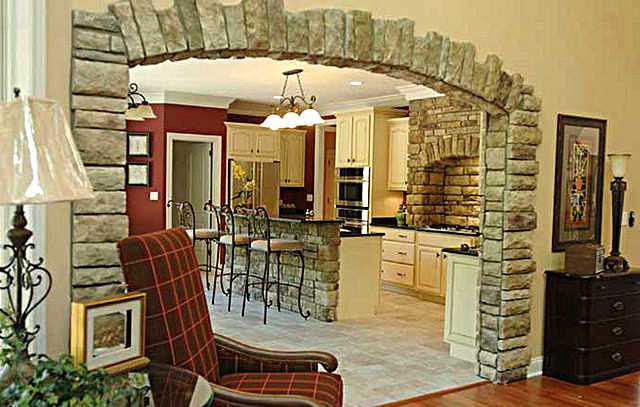 Harmonious use of decorative stone in kitchen design. Kitchen furniture, appliances, as well as other decorative elements made of stone are made in light colors and form a complete picture.
Harmonious use of decorative stone in kitchen design. Kitchen furniture, appliances, as well as other decorative elements made of stone are made in light colors and form a complete picture.
Bedroom
The use of decorative stone in the bedroom is not very popular. But in vain.
With proper design, the stone will not become a rude and inappropriate misunderstanding, but even a sign of elegance and sophistication.
Decorate the wall at the head of the bed with a stone - and the main purpose of the room, its main place, is immediately indicated.
If this option is inappropriate, you can separate the work area (if any), mark the TV, or simply create a panel.
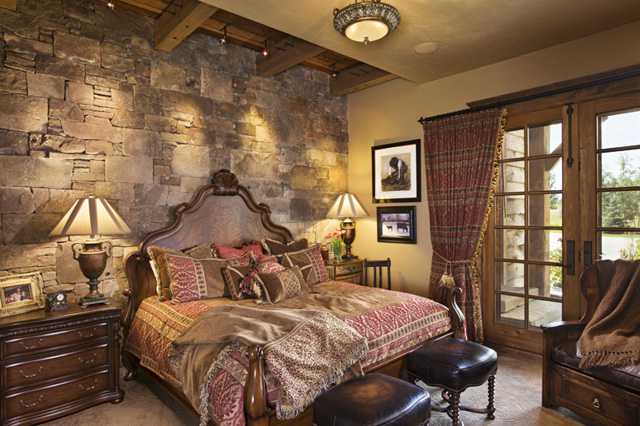 The design of the head of the bed with a stone creates the feeling of a royal bed.
The design of the head of the bed with a stone creates the feeling of a royal bed.
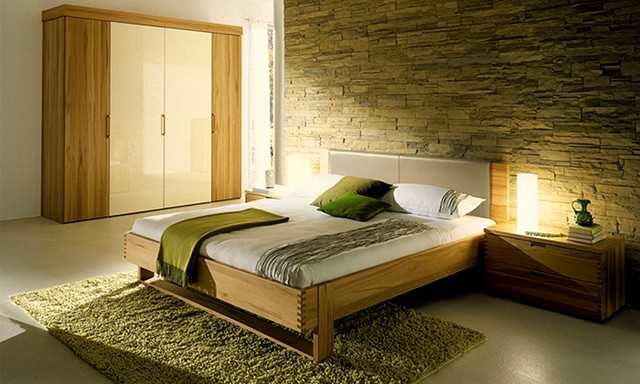 The stone wall is the main detail of the bedroom interior.
The stone wall is the main detail of the bedroom interior.
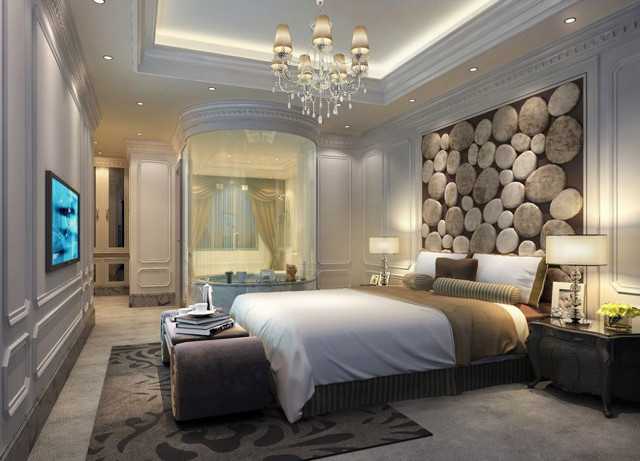 Large artificial pebbles of different sizes turn a sterile room into an original bedroom.
Large artificial pebbles of different sizes turn a sterile room into an original bedroom.
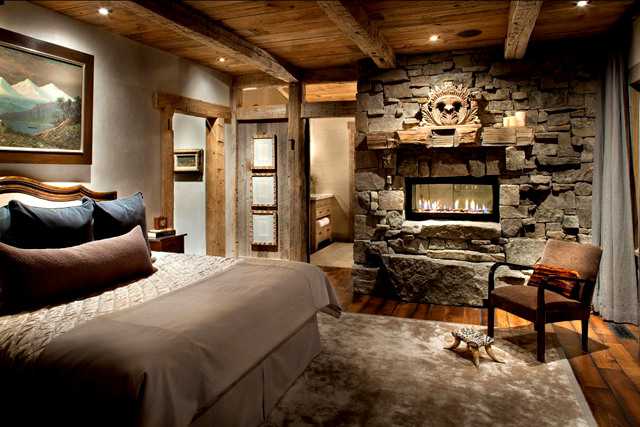 A stone wall with a built-in fireplace and deliberately rough wooden beams create warmth and comfort in the bedroom.
A stone wall with a built-in fireplace and deliberately rough wooden beams create warmth and comfort in the bedroom.
Bathroom
The water-repellent properties of decorative stone - this is what explains the high popularity of decorating bathrooms with stone.
A large bathroom requires original solutions and play with color and texture.
But what if you are a “happy” owner of an average 2-4 meter room? All the same to a stone - to be.
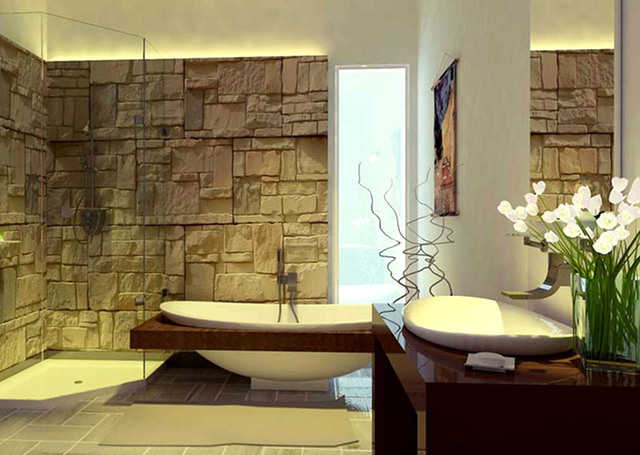
It is not worth tiling the entire bathroom with decorative stone: an already small room will become even smaller.
Highlight a specific area: a mirror, part of the wall, sink, shower.
The bathroom itself can be turned into an element of the Middle Ages.
If you use a stone that imitates granite or marble, you get an incredibly luxurious room..
In general, the bathroom is an unplowed field for the use of decorative stone.
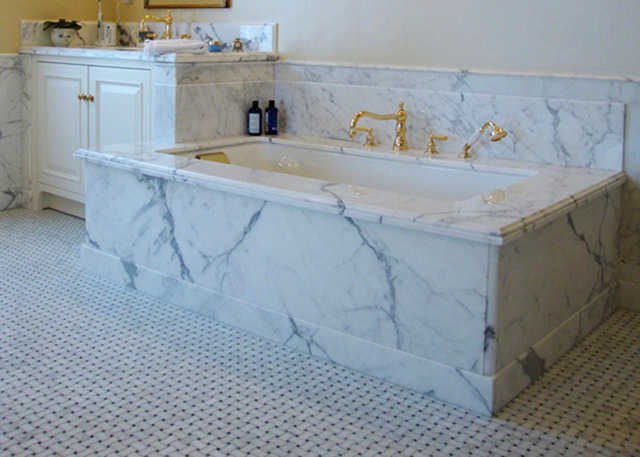 This bathroom is worthy of royalty!
This bathroom is worthy of royalty!
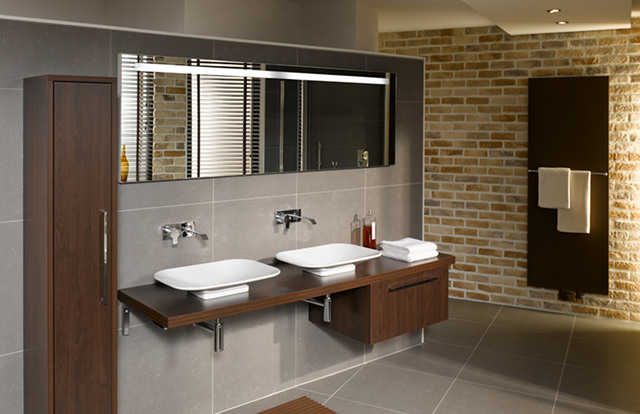 Mixing colors and styles is also relevant for the bathroom.
Mixing colors and styles is also relevant for the bathroom.
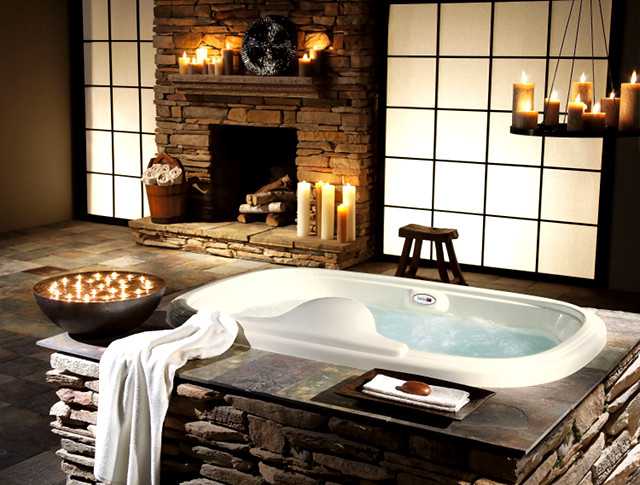 The bathroom is turning, turning ... into a real spa!
The bathroom is turning, turning ... into a real spa!
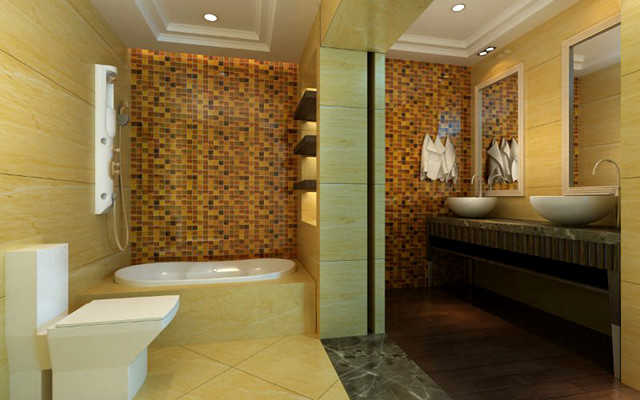 Space is a space for imagination.
Space is a space for imagination.
Look. One of the most important tasks in its design is the separation of zones. A decorative stone can help you solve it outside the box.
The same material can be used to line one of the walls in a minimalist bedroom, especially if you decide in the Japanese style.
Winter Garden
When decorating a winter garden, it is somehow even indecent not to use a decorative stone.
The combination of potted plants and stone is one of the most successful.
Here you can realize all the most incredible ideas.
Alpine slides, flower boxes, stone shelves, coasters, accessories… Stone can be used recklessly in the winter garden.
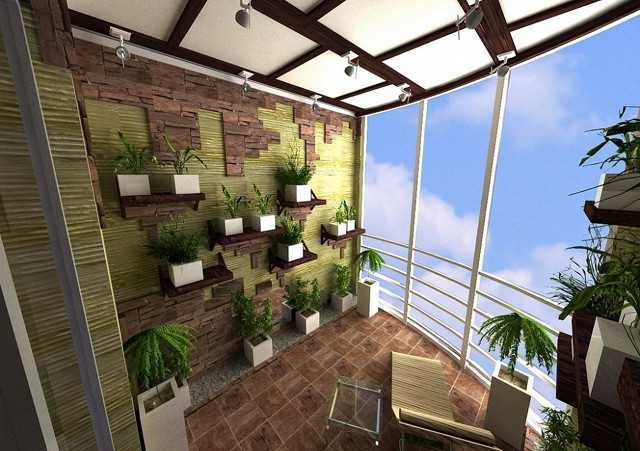 A piece of summer on a small loggia.
A piece of summer on a small loggia.
Light, color, pattern and variety of textures are the secret of this composition. The decor uses warm green walls and various shades of brown.
So simple and so stylish.
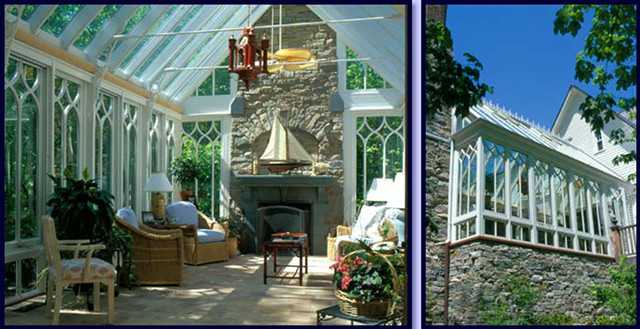 Fireplace in the greenhouse?
Fireplace in the greenhouse?
Why not, because in addition to the obvious benefits, it will create comfort in the room.
Rough stones light color emphasize the airiness of the design of the greenhouse itself.
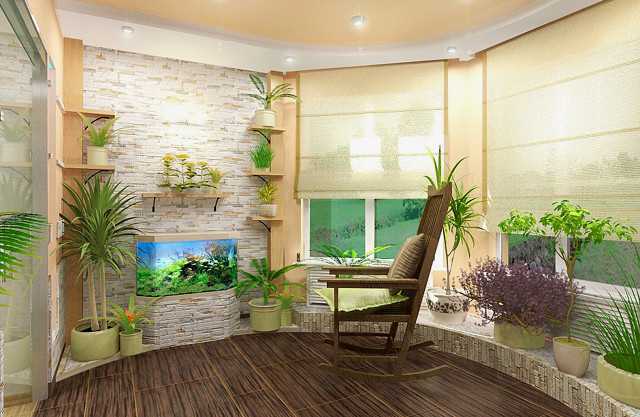 Light, color and once again light - this is the main leitmotif of the designer of this room. The pattern of the walls and floor echoes, while the interior does not look clumsy or too simple.
Light, color and once again light - this is the main leitmotif of the designer of this room. The pattern of the walls and floor echoes, while the interior does not look clumsy or too simple.
On the contrary, everything turned out to be interesting and even stylish.
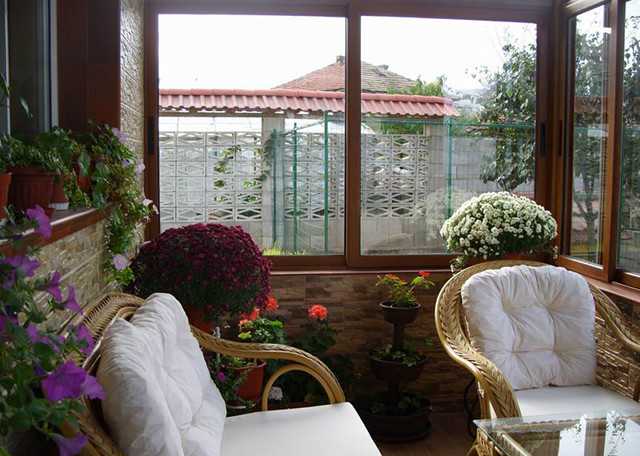 The brown color of the window frames, combined with light walls of different shades and textures, give the winter garden warmth and intimacy.
The brown color of the window frames, combined with light walls of different shades and textures, give the winter garden warmth and intimacy.
You will not want to leave such a cozy winter garden.
Since ancient times, the stone has been considered a special symbol for man.
Stones created by nature could become talismans. It is believed that the stone can "read" the energy vibrations of the surrounding world.
When choosing a decorative stone for your interior, remember this.
A wall finished with beautiful and spectacular material, rather than traditional wallpaper or paint, is a very fashionable solution. The role of wall cladding is ideally performed by tiles made of both natural stone and artificial stone for wall decoration in an apartment, for example, gypsum, concrete or ceramics. What to choose, how materials differ, how to make a spectacular decorative trim stone walls in the apartment? Answers to these questions, as well as photos interesting ideas and beautiful interiors you will find in this article.
What decorative stone for wall decoration in an apartment to buy?
So, beautiful cladding, reminding us stone wall, can be made with many materials. It may be a natural stone, or it may be its successful imitation, which appearance difficult to distinguish from the original.
The most popular finishing materials are:
- natural stone (sandstone, slate, granite, marble, travertine);
- plaster tiles;
- ceramic tile;
- terracotta;
- clinker;
- concrete.
Decorative stone for wall decoration in the apartment - photointeriors
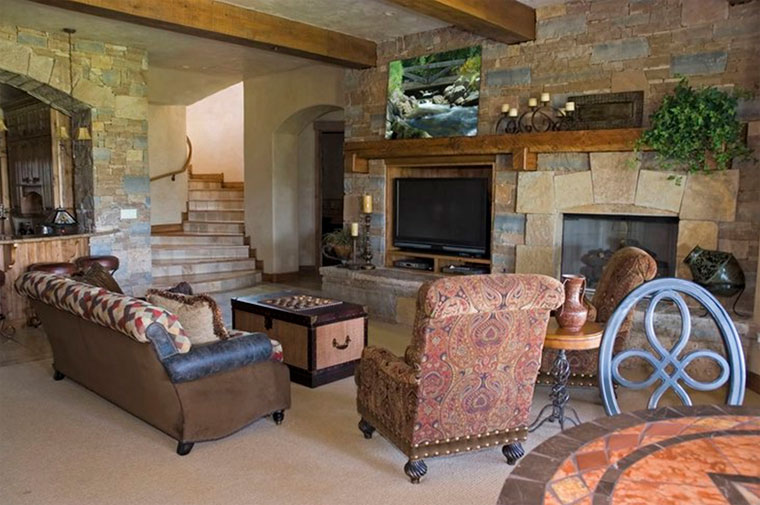
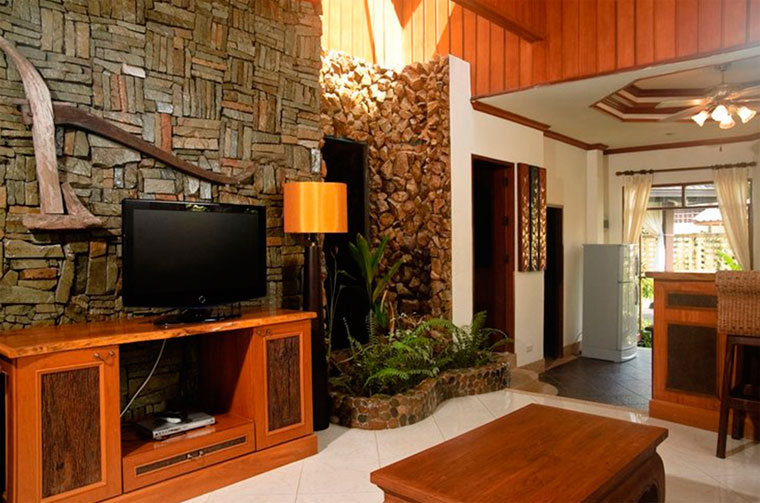
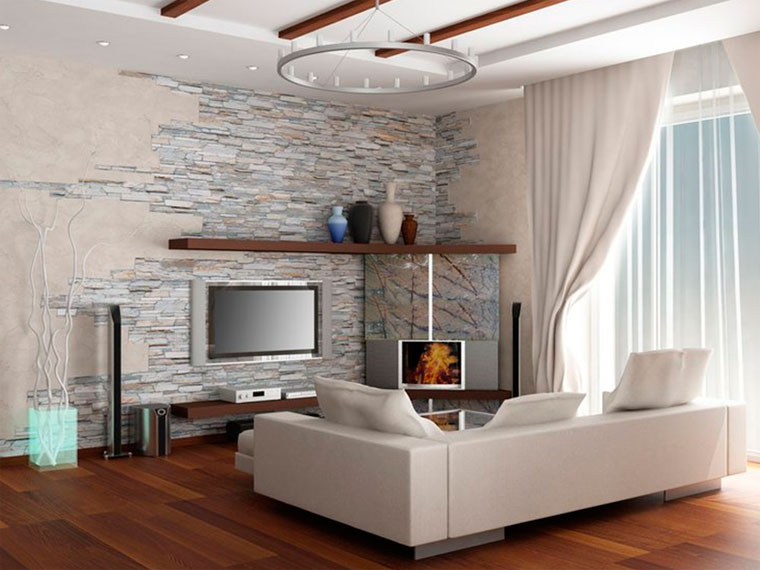
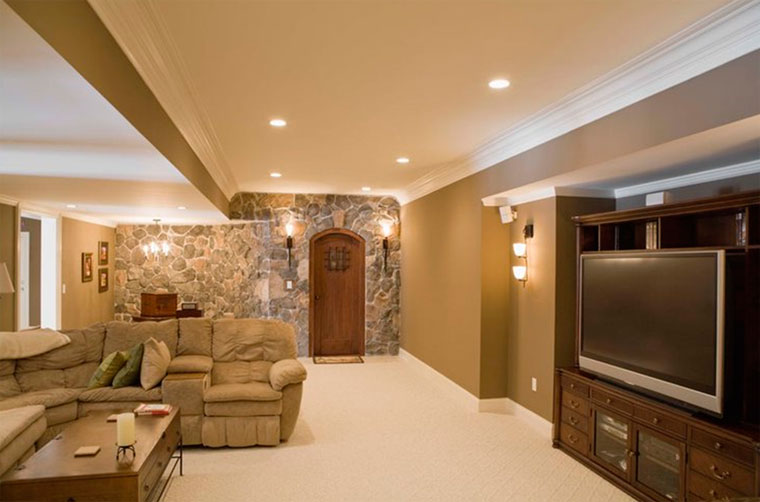
Consider these materials and their characteristics in more detail.
Stone wall decoration
Natural stone today can often be seen in houses and apartments. It looks very elegant and natural modern style, as well as in the classical one. What you should know when you want to finish the walls with natural stone in the apartment?
Stone tiles are made from natural natural stone. The most common materials are as follows:
- sandstone;
- granite;
- marble;
- slate;
- pebbles;
- travertine.
This wall covering is durable and looks very impressive. A big advantage of stone tiles is also the richness of colors and textures. Some natural stone tiles may discolour over time, which is a natural process.
Marble, granite, travertine are best bought at warehouses that also offer measurement, stone preparation (impregnation, cutting) and installation. It is not possible to cut these plates at home on your own. Lighter stone tiles made of sandstone or pebbles can be purchased at hardware stores and markets. Finishing stone, of course, will cost a lot. Cheaper and easier to install are imitations that look like stone but do not have all of its properties.
How to care for stone walls?
There are many specialized preparations for the protection, cleaning and maintenance of certain types of stone. It is advisable to use them, as they will guarantee that the surface will not be damaged during operation and will be durable. Avoid products that are not made for stone (especially bathroom cleaners, scale removers and rust removers). They cause staining and pitting even on relatively resistant granite slabs.
Before choosing the type of stone for wall decoration in a house or apartment, you should study the properties of these materials:
- Class or degree of moisture absorption. The less water a stone absorbs, the less it becomes contaminated. In class A, granite, alabaster, quartzite and some marbles are the least absorbent, so these materials are most often used in bathrooms and for finishing an apron in the kitchen. In class B - some marbles and slates. Class C includes the most absorbent stones, such as sandstone, and should not be used on kitchen and bathroom walls.
- Hardness. Granite, basalt and hard sandstone are best in this regard. However, for wall decoration in an apartment, this indicator is not so important, it is of greater importance when choosing a floor covering. However, solid materials can be used for walls and plinths in the hallway or in the bathroom.
- Variety. There may be color differences between the first and second grade, in addition, the second grade may have surface defects or mechanical damage. However, if we want to achieve the effect of aging, then we can choose the second grade - stones with unequal, broken edges. In this case, you will get the desired effect, and pay about 50 percent less for finishing.
Consider some types of natural stone for wall decoration in more detail.
- Sandstone - This is a rather soft and porous material used for wall coverings, fireplaces. Dirt easily penetrates into it, so it is worth soaking it. special drug based on silicone. Otherwise, it will have to be brushed frequently. It is available as tiles with a thickness of 1-4 cm and different sizes.
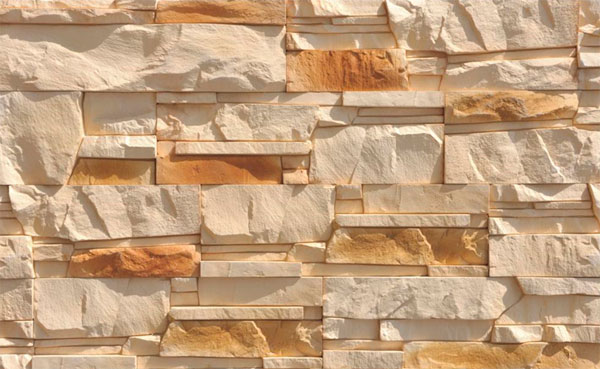
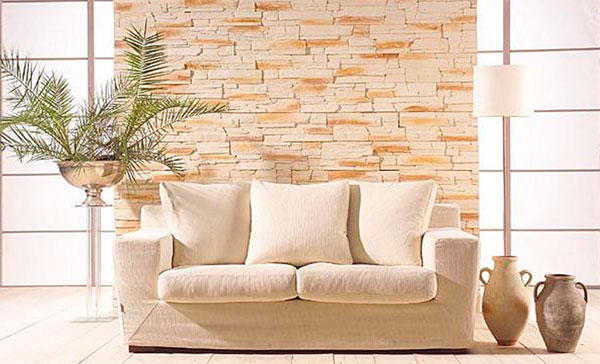
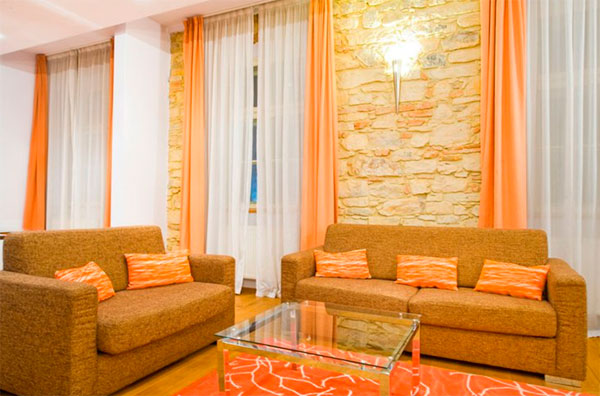
- Slate – It is extremely durable, resistant to high and low temperatures. Workable, non-absorbent and abrasion resistant. Pairs well with glass, wood or concrete. Available as a 1-2 cm thick tile.
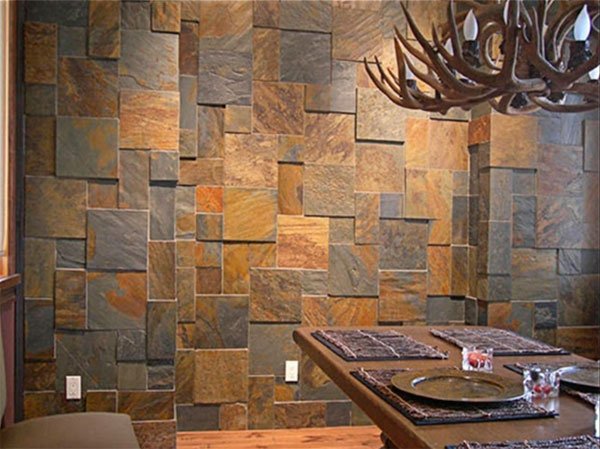
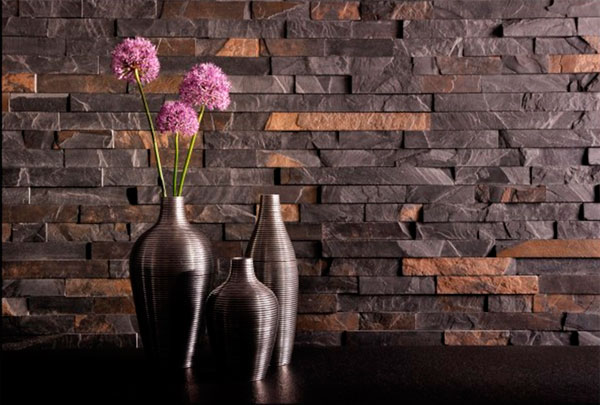
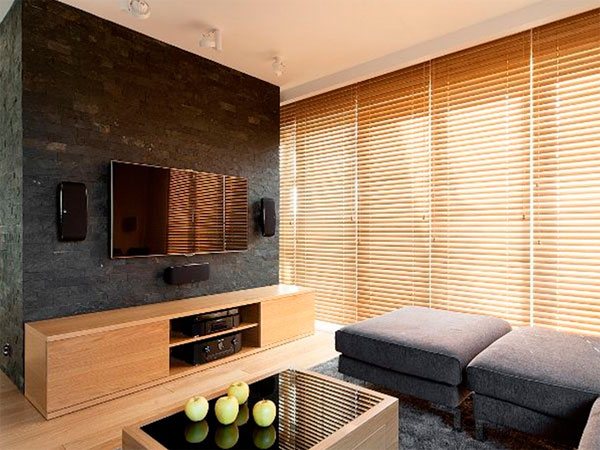
- - the material is resistant to high temperatures. Periodic impregnation is necessary to prevent staining and absorb moisture. Used for bathroom walls, sometimes kitchen and living room. Available as slabs of various thicknesses, cut to size.
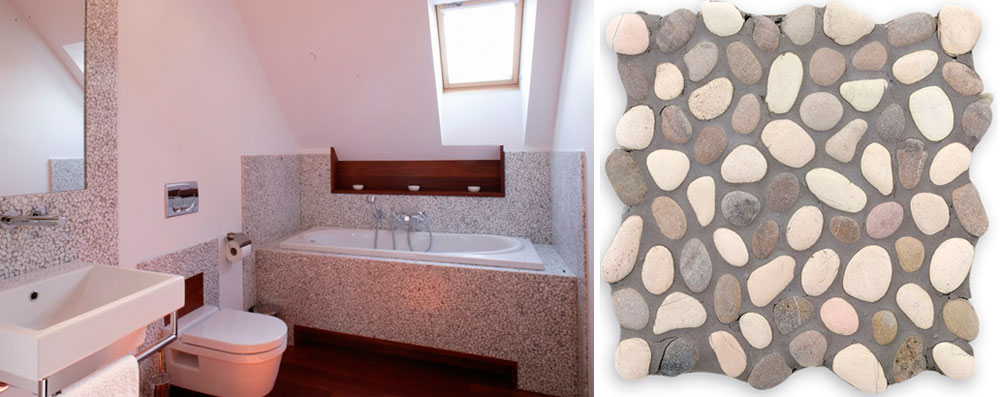
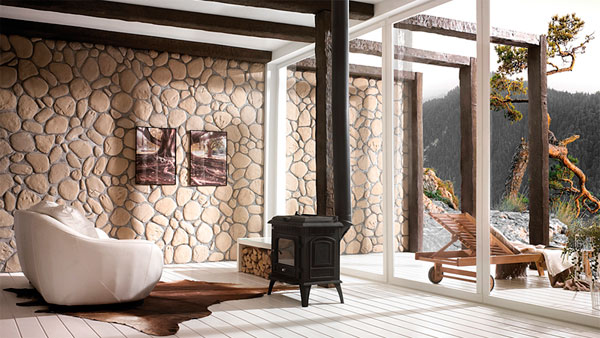
- . Very durable and abrasion resistant. Good for floor and wall coverings, as well as for the fireplace body. Due to the porous surface, it requires conventional impregnation. Used in bathrooms, kitchens and living rooms.
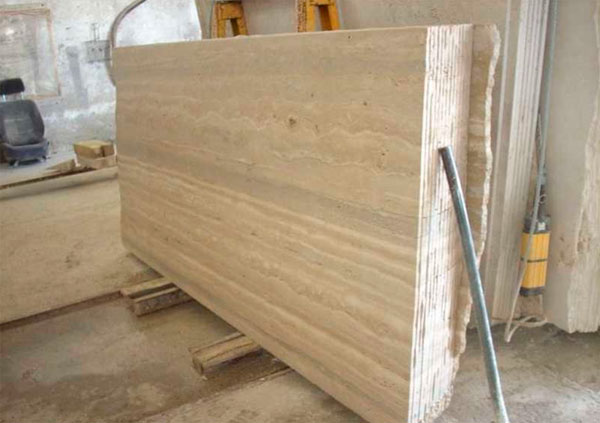
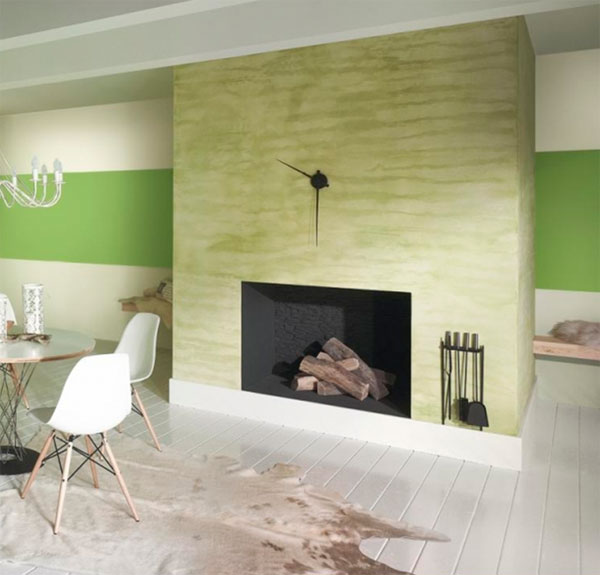
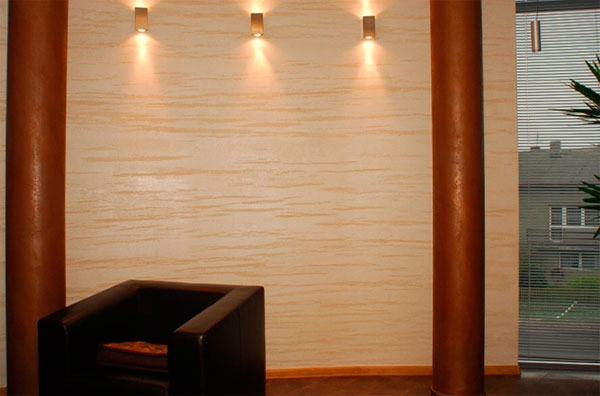
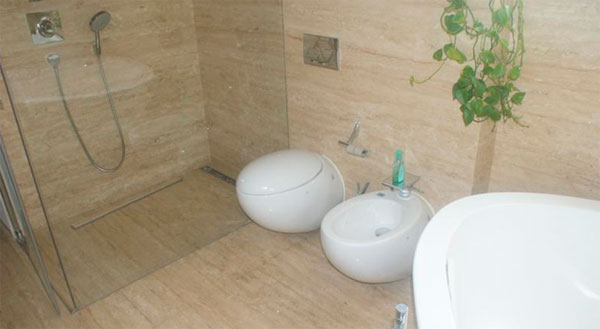
- - Resistant to high temperatures. Requires occasional impregnation to prevent staining and reduce moisture absorption. Used to decorate the bathroom, hallway, living room.
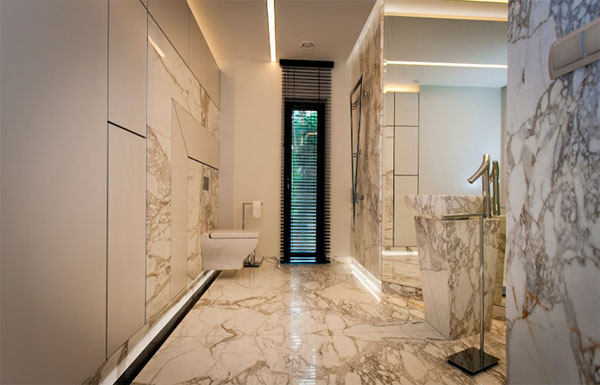
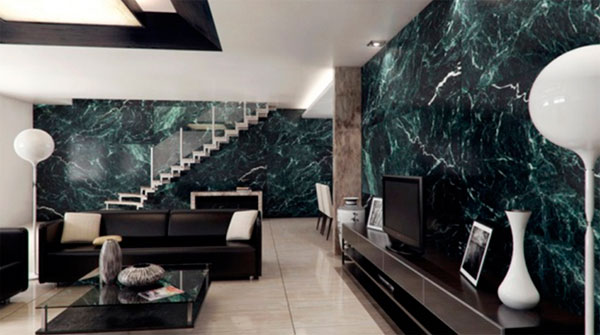
- – hard, hard to scratch, crack-resistant, resistant to stains, moisture and temperature extremes. It does not require impregnation and frequent Maintenance. Ideal for flooring and kitchen worktops.
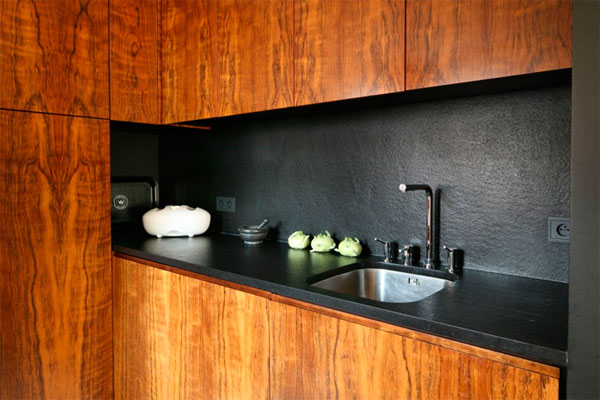
Ceramic tiles are made from natural materials such as:
- clay;
- sand;
- crushed quartz;
- feldspar;
- kaolin.
During production, other components are also added to them. The panels are then treated with high temperature. They can be polished, polished, glazed. They are most commonly used as wall and floor finishes in kitchens and bathrooms, mainly for practical reasons. Ceramic tiles are durable, waterproof and easy to clean. Glazed panels are used for wall cladding. These are ceramic plates covered with a thin layer of glass, designed exclusively for laying on walls. They are thinner than floor tiles and more fragile. The water permeability of this type of finishing material can be higher than 10%.
popular type ceramic tiles is porcelain stoneware. This material is mainly used on the floor, but sometimes it is also used on the wall (especially thin stoneware is ideal). Porcelain stoneware can be technical, porcelain, polished. Porcelain stoneware is distinguished by a wide variety of designs. In its production, they use different types mineral pigments, masses and glazes. Its distinctive characteristics:
- frost resistance;
- low water absorption (often below 0.5%);
- resistance to mechanical damage.
Clinker tiles are the hardest, their water absorption is less than 3%. The tile is made from clay, the design is dominated by the natural colors of the earth, but it can also be glazed. Its surface can be smooth or textured. Walls finished with clinker tiles often look like brick.
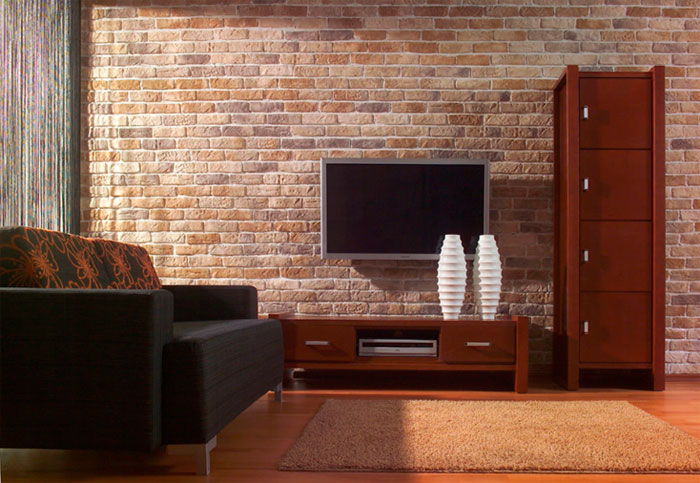
This is the traditional division of ceramic tiles. Today, many stores offer a much simpler division - into wall and floor.
Become very popular. They are used in modern interiors in industrial style. Their production uses cement, sand and water, as well as recycled additives. Walls finished with large concrete slabs can resemble raw concrete.
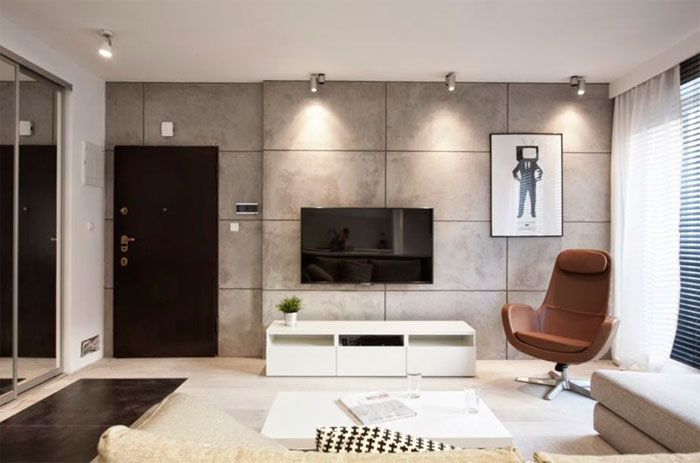
This finishing material is made from gypsum, so it can only be used for interior decoration.
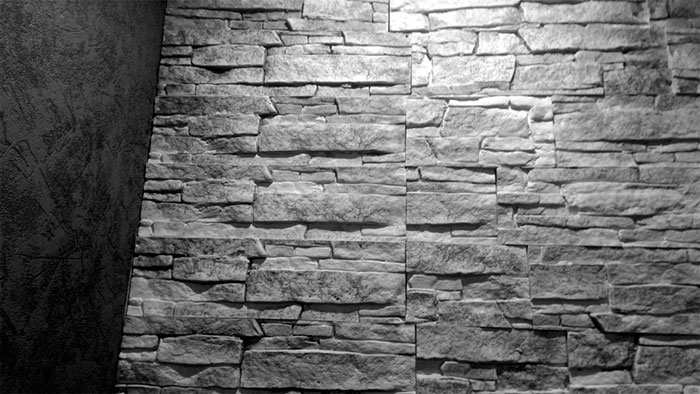
Gypsum tiles have a favorable pH, which prevents the growth of mold and creates a good microclimate in the interior, in addition, they do not attract dust and are classified as non-combustible.




